After the very nice lunch break, I continued with my stroll around Strasbourg. First I actually returned to the Cathedral that was now open for visits.
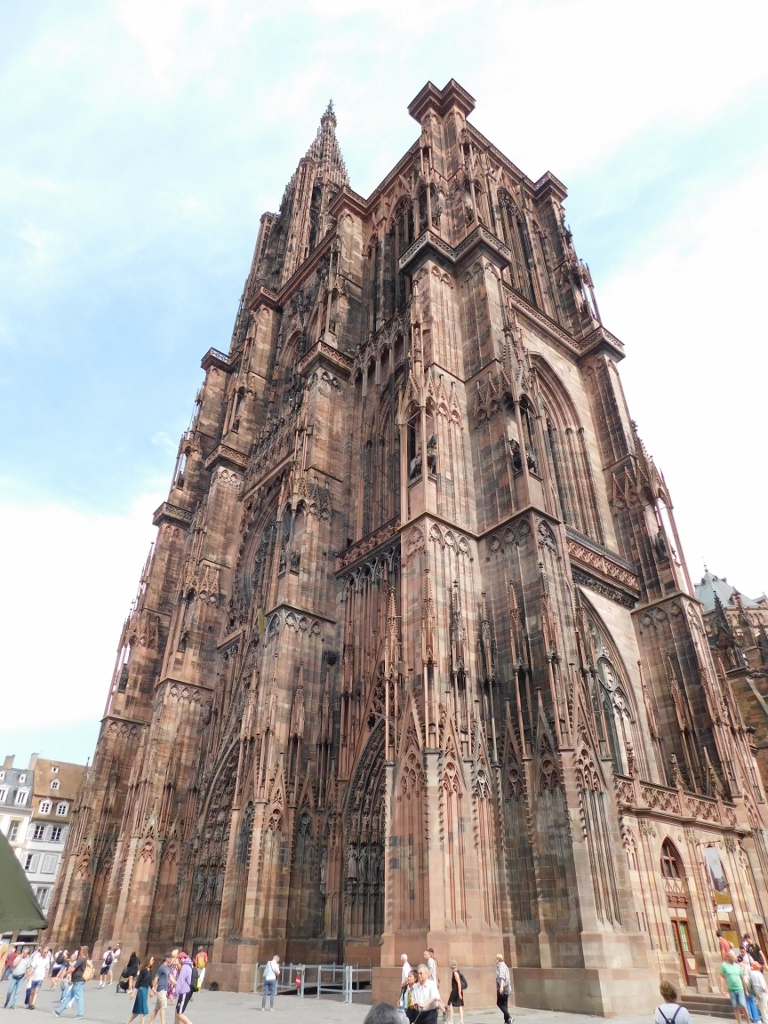 Strasbourg Cathedral
Strasbourg Cathedral
In the previous sequel of these travel stories, I have already written a little about the Cathedral and some of its characteristics, primarily those linked to its exterior elements. Now, when I entered, I could enjoy its interior decorations and beauty.
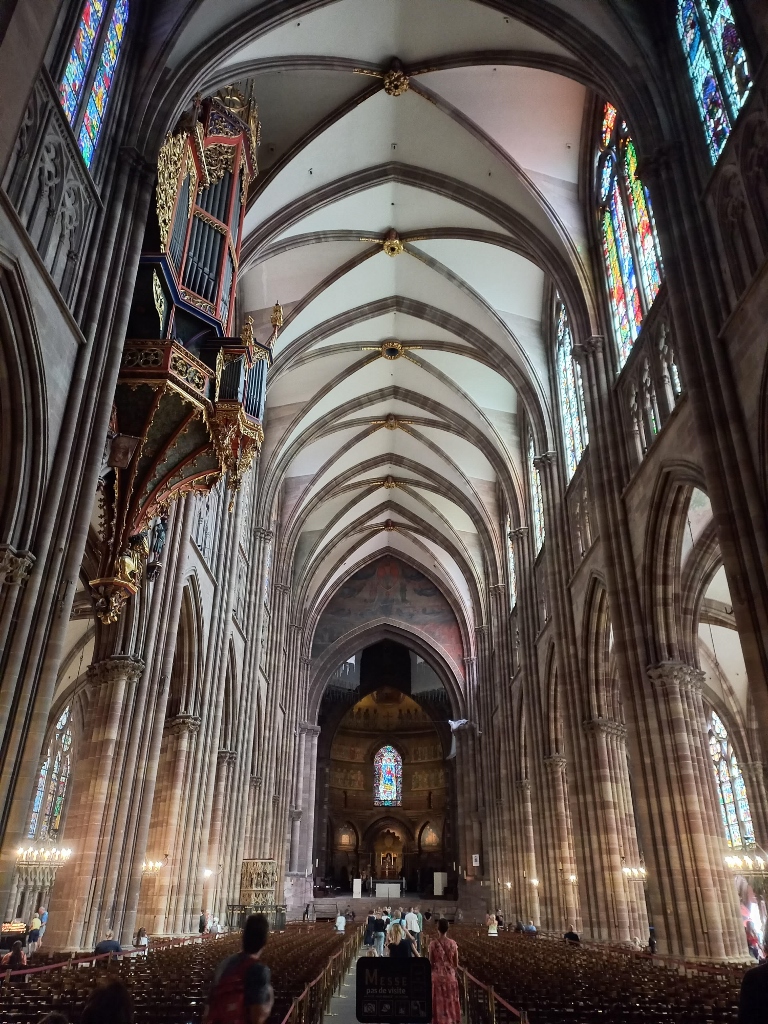 Strasbourg Cathedral, the interior
Strasbourg Cathedral, the interior
One of the most striking elements when you enter the church are the large and numerous stained-glass windows that provide the church with natural lighting while having an exceptionally impressive visual effect.
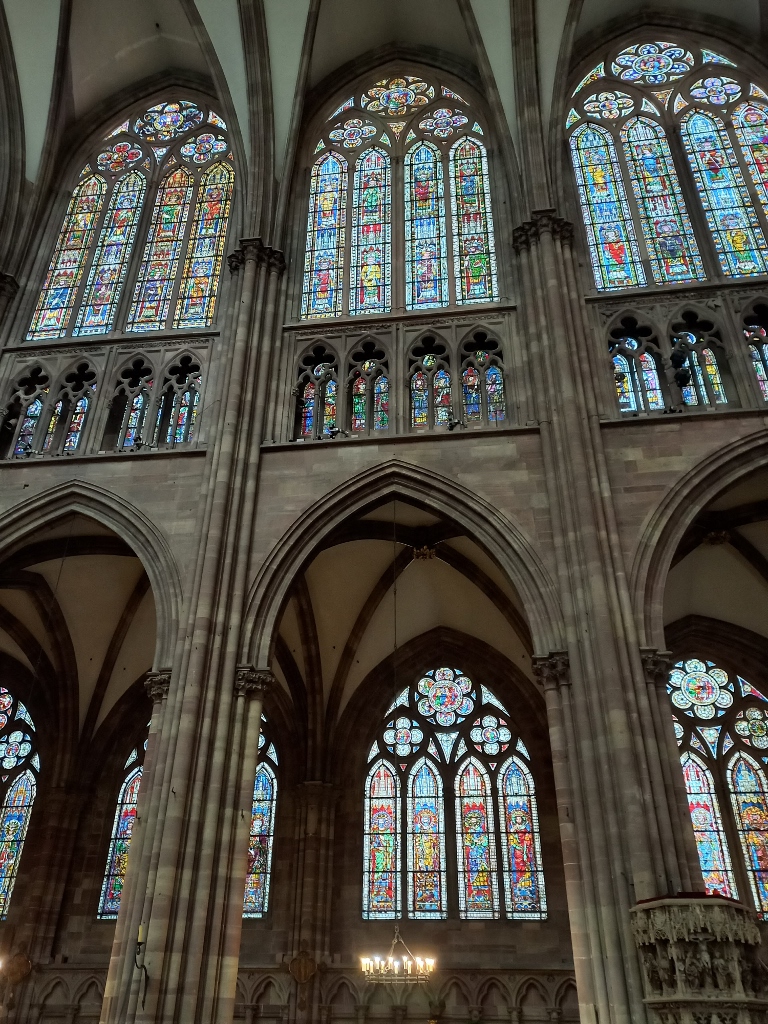 Strasbourg Cathedral, a detail
Strasbourg Cathedral, a detail
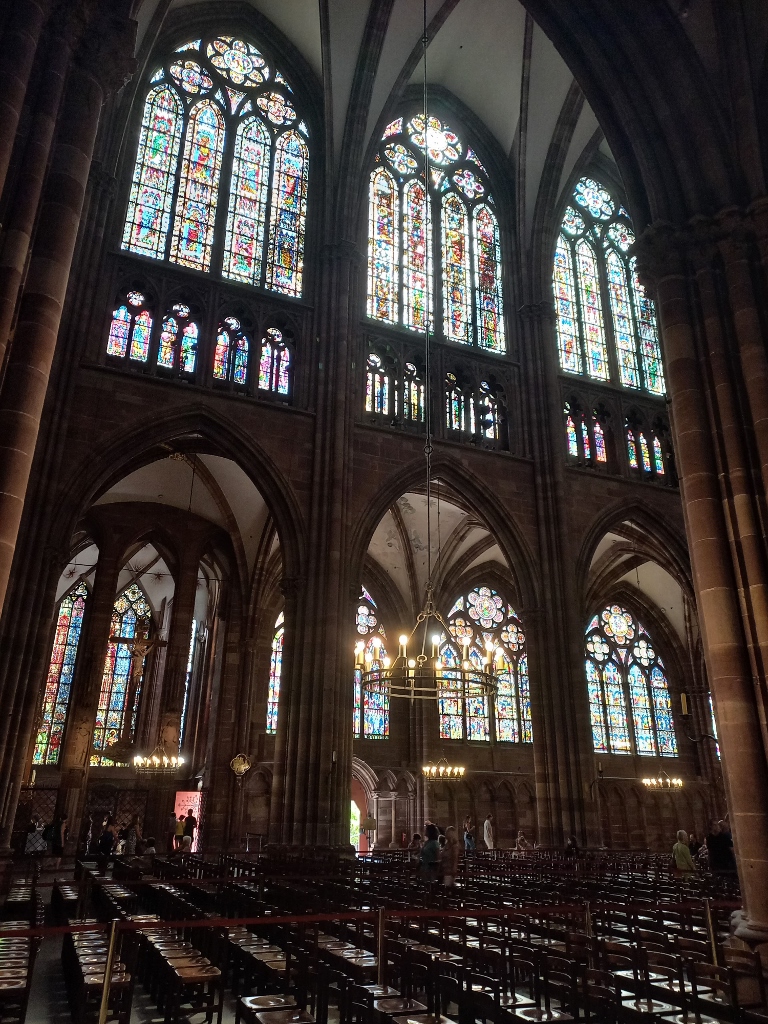 Strasbourg Cathedral, a detail
Strasbourg Cathedral, a detail
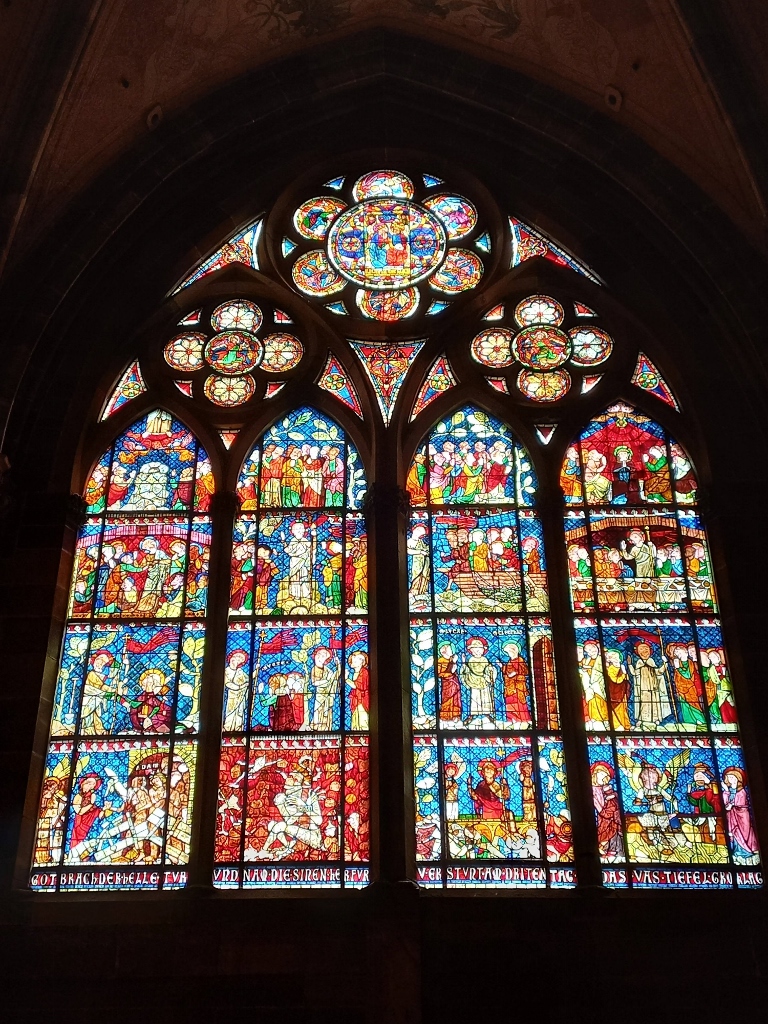 Strasbourg Cathedral, a detail
Strasbourg Cathedral, a detail
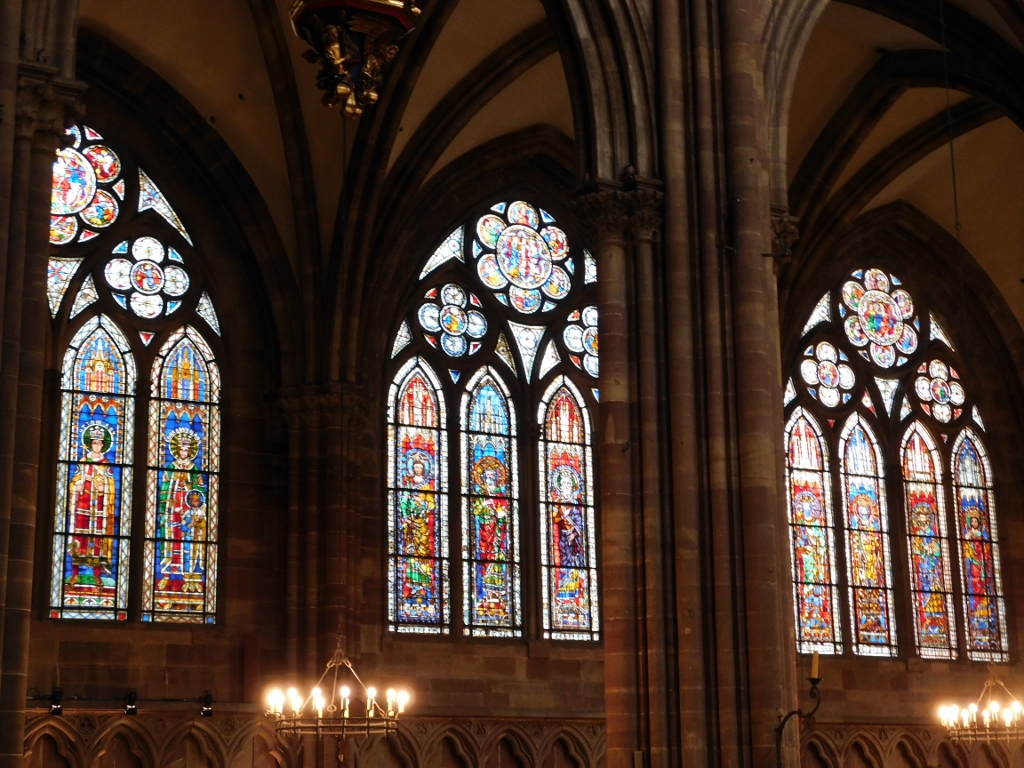 Strasbourg Cathedral, a detail
Strasbourg Cathedral, a detail
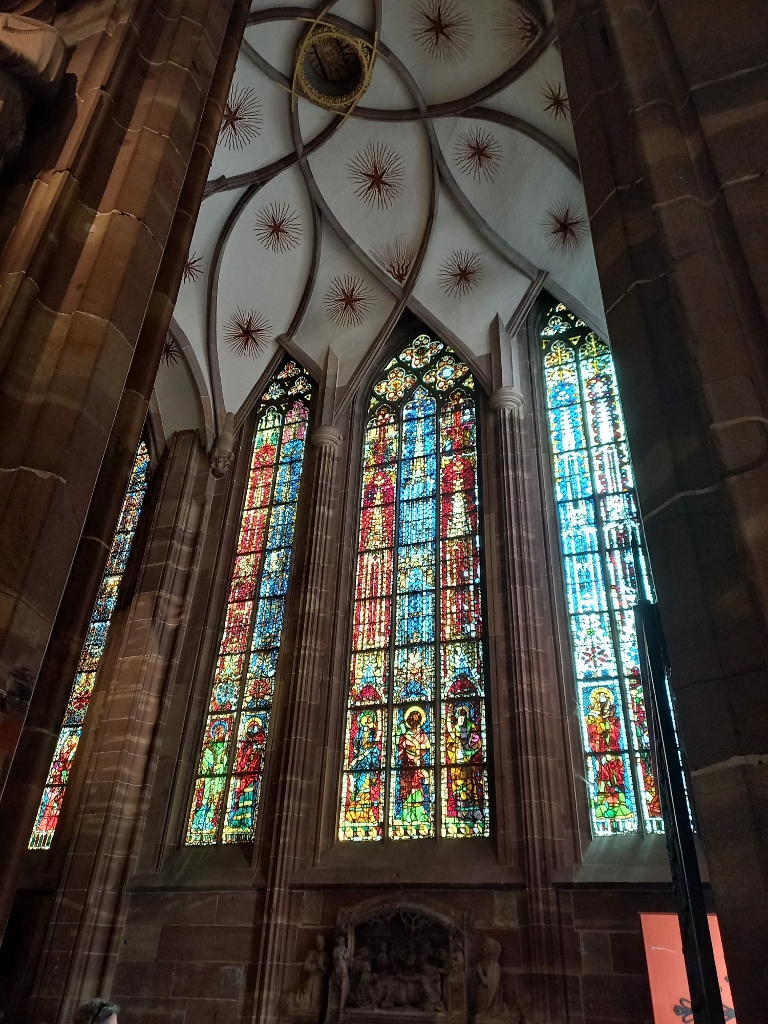 Strasbourg Cathedral, a detail
Strasbourg Cathedral, a detail
You should certainly note the rose window from the narthex, i.e., the one above the entrance into the church that was made between 1320 and 1340, but was restored to a large degree in the later periods.
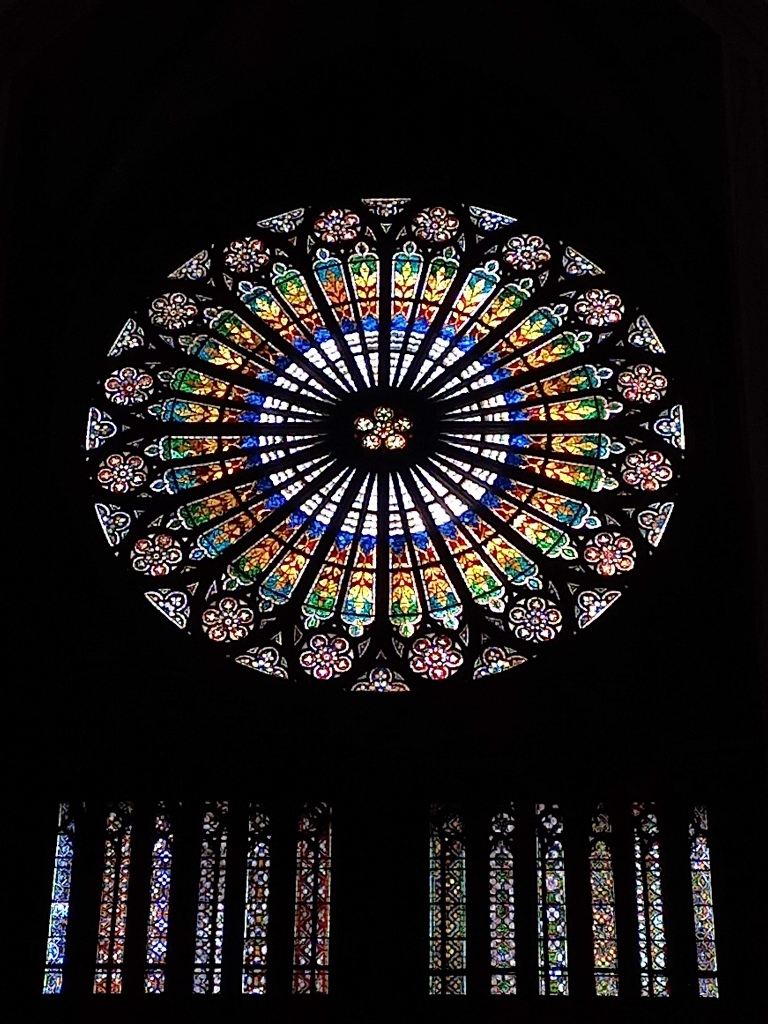 Strasbourg Cathedral, a detail
Strasbourg Cathedral, a detail
What is particularly interesting at the Cathedral and what is often pointed out are two elements that can be found in the south transept. One is the Pillar of Angels and the other is the Astronomical Clock. Both of these elements can be seen in the photo below.
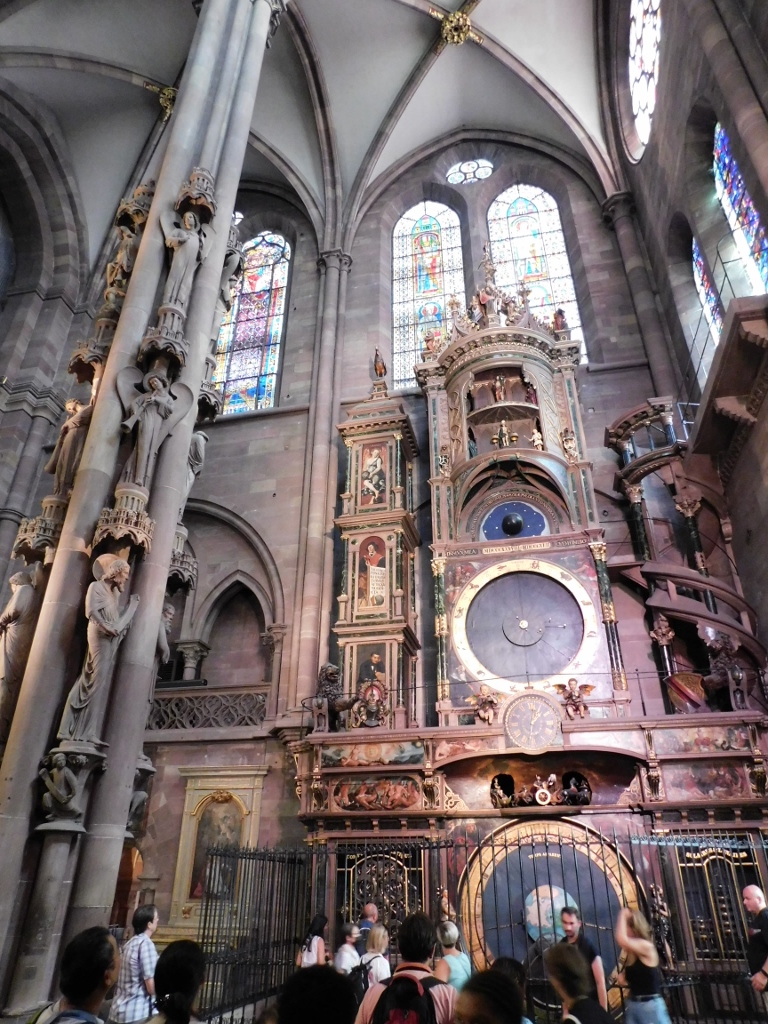 Strasbourg Cathedral, a detail
Strasbourg Cathedral, a detail
The Pillar of Angels from the 13th century is a support pillar that consists of the middle column and four slender decorative colonettes. Additional decoration is provided by the groups of statues that have their own symbolism, primarily linked to the Last Judgement and there are also statues of angels that have given the pillar its name.
As for the Astronomical Clock, the first clock at the Cathedral was made in the 14th century, while the next one came in the second half of the 16th century. The latter functioned until the end of the 18th century and then it was replaced in the period from 1837 until 1842 by the clock that can be seen at the church today.
With all of its elements the clock is 18 m high and it shows different things, but it is popular among the visitors because every now and then a figure within the clock hits something – there is regular ringing at quarters of an hour, the figure of Death chimes the hours, other figures pass in front of the figure of the Death and the whole composition is most active at 12.30, because this is the time when the midday is chimed. I came here at 1 o’clock in the afternoon which, just like in Bern, turned out to be the most modest time for the visit. But, I am content. Here is another photo that is rather blurry, but it still clearly shows some details and I even managed to make a video showing the events taking place a 1 pm.
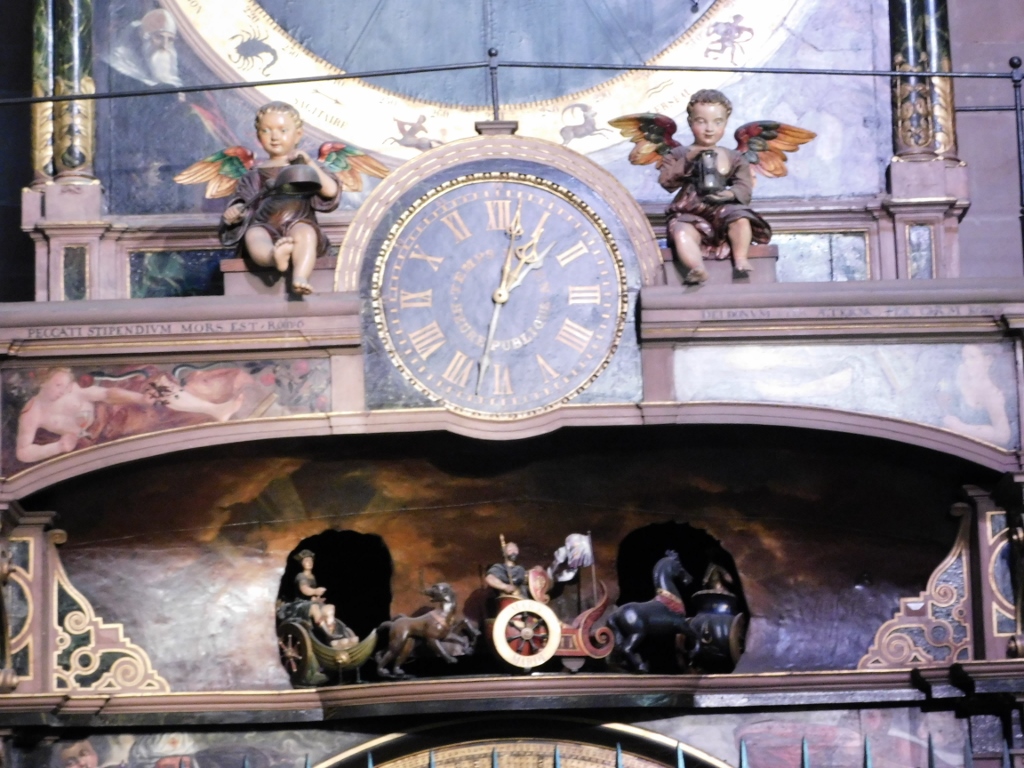 Strasbourg Cathedral, Astronomical Clock, a detail
Strasbourg Cathedral, Astronomical Clock, a detail
After the visit to the Cathedral, I got out to the square first and kept admiring the surrounding buildings. Some of them, that are more important, have already been mentioned in the previous sequel of my travel stories.
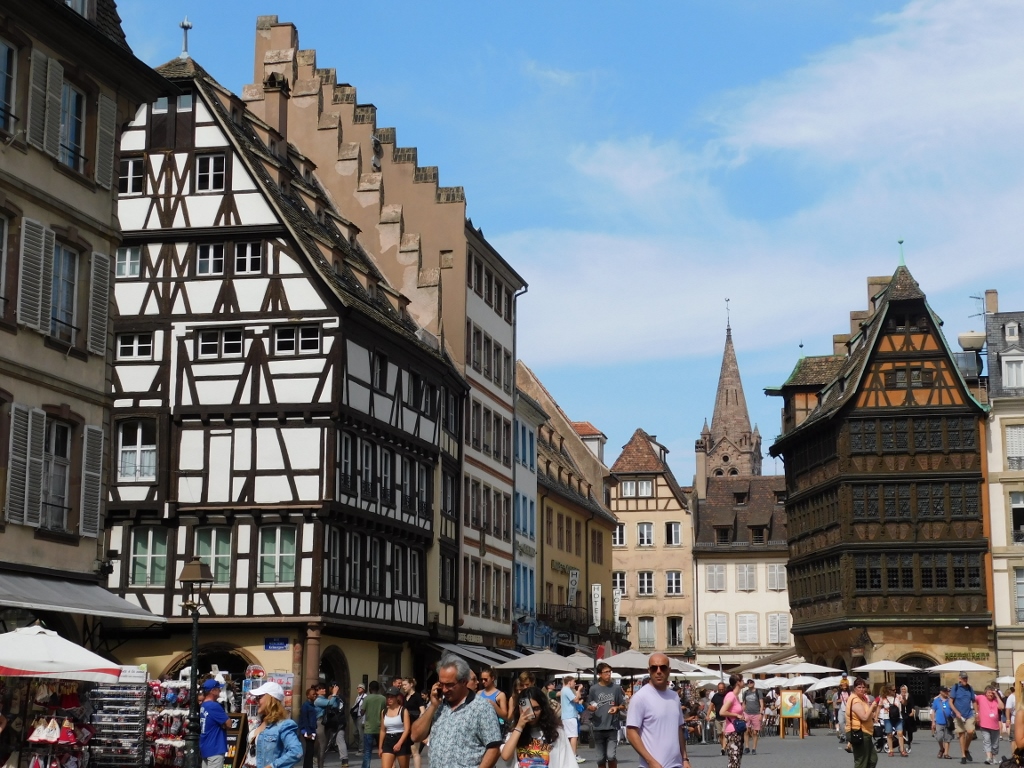 Pharmacie du Cerf is to the left, while the Kammerzell House is to the right
Pharmacie du Cerf is to the left, while the Kammerzell House is to the right
My plan was to start with the sightseeing of some other important parts of the historical centre of Strasbourg, but before that I noted again the front facade of the Cathedral and some of its parts, since it was all rather lit by the sunlight. Needless to say, I had to take photos of it all once again.
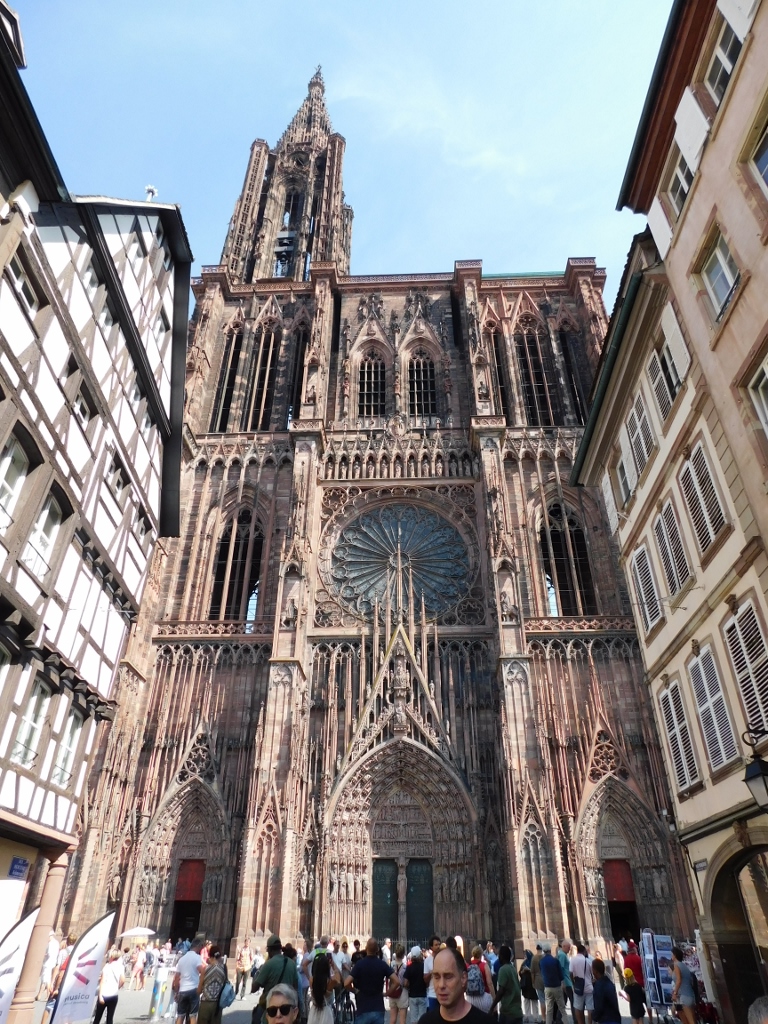 View at the Cathedral from Rue Mercière
View at the Cathedral from Rue Mercière
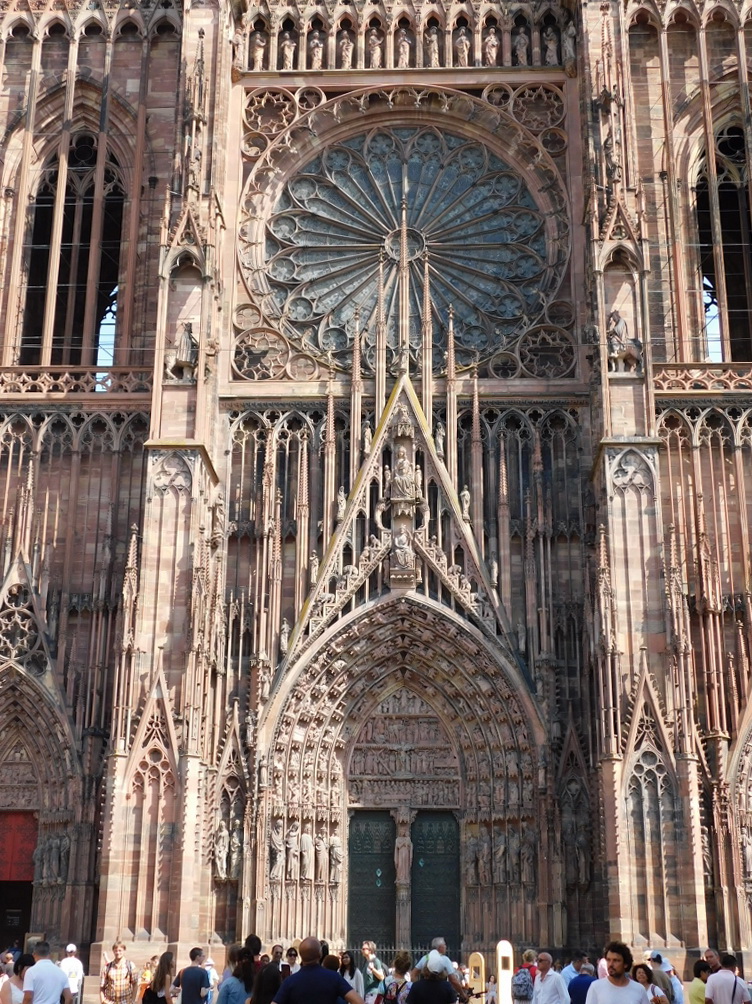 Strasbourg Cathedral, west facade, central portal
Strasbourg Cathedral, west facade, central portal
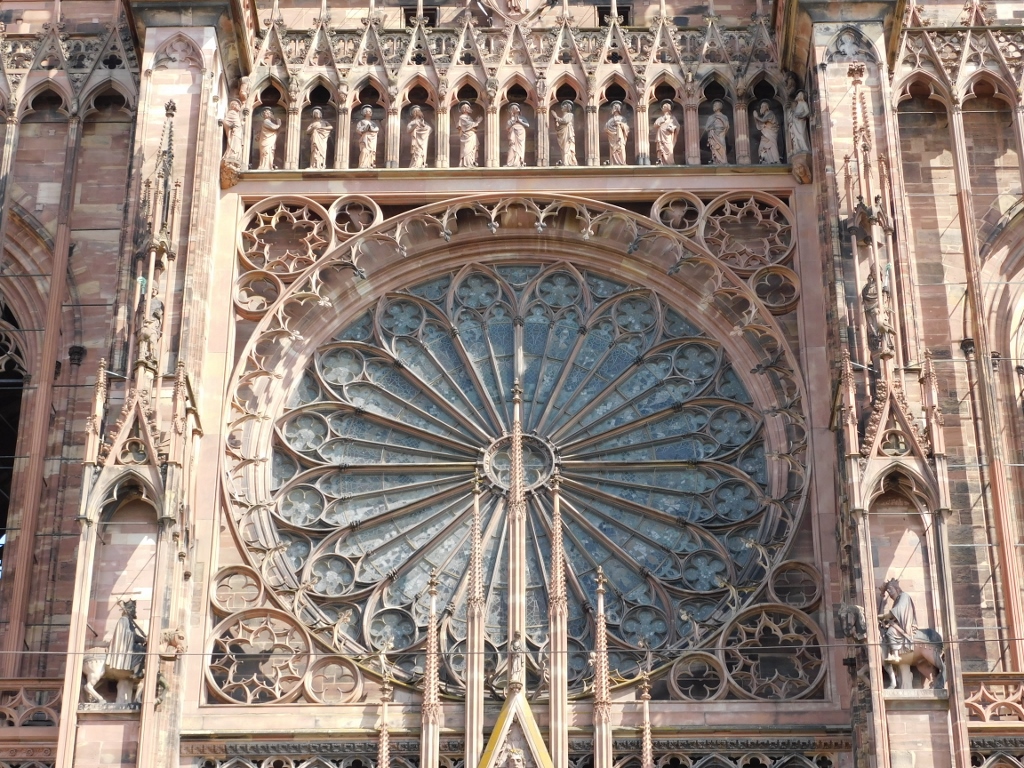 Strasbourg Cathedral, west facade, a detail
Strasbourg Cathedral, west facade, a detail
The historic centre of Strasbourg situated on the river island called Grande Île has abundance of exceptionally picturesque details. These are not only the Cathedral and old houses some of which are quite famous and some rather unknown among ordinary visitors, but also there is a myriad of small details that contribute to the overall impression.
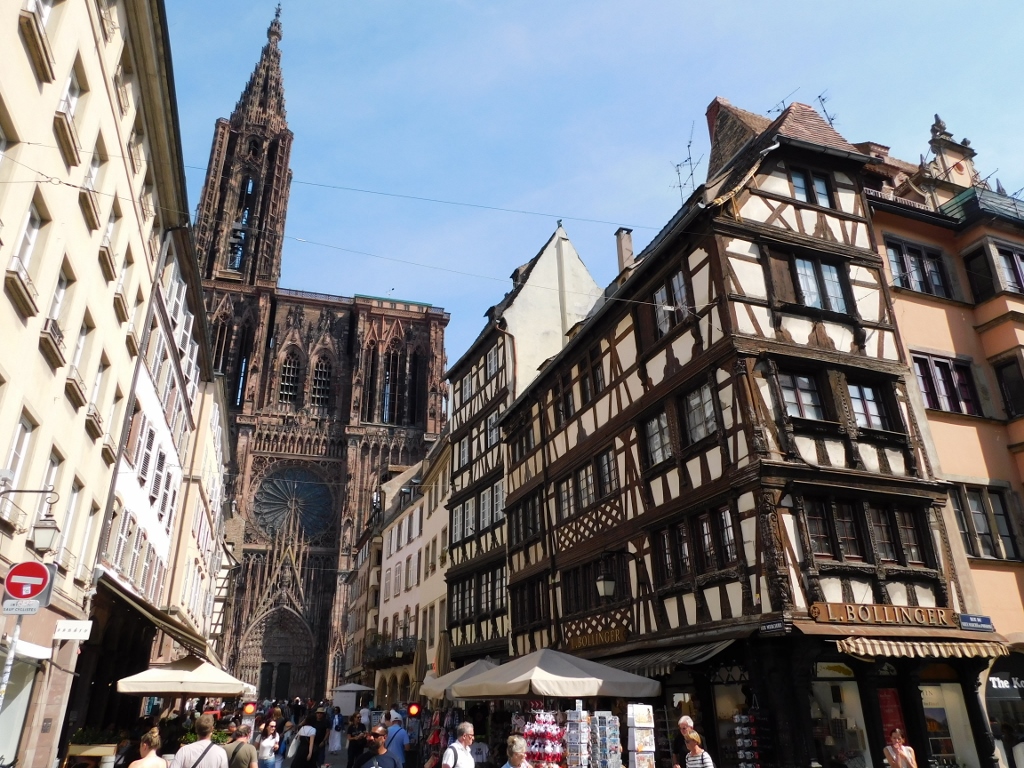 Strasbourg, a detail
Strasbourg, a detail
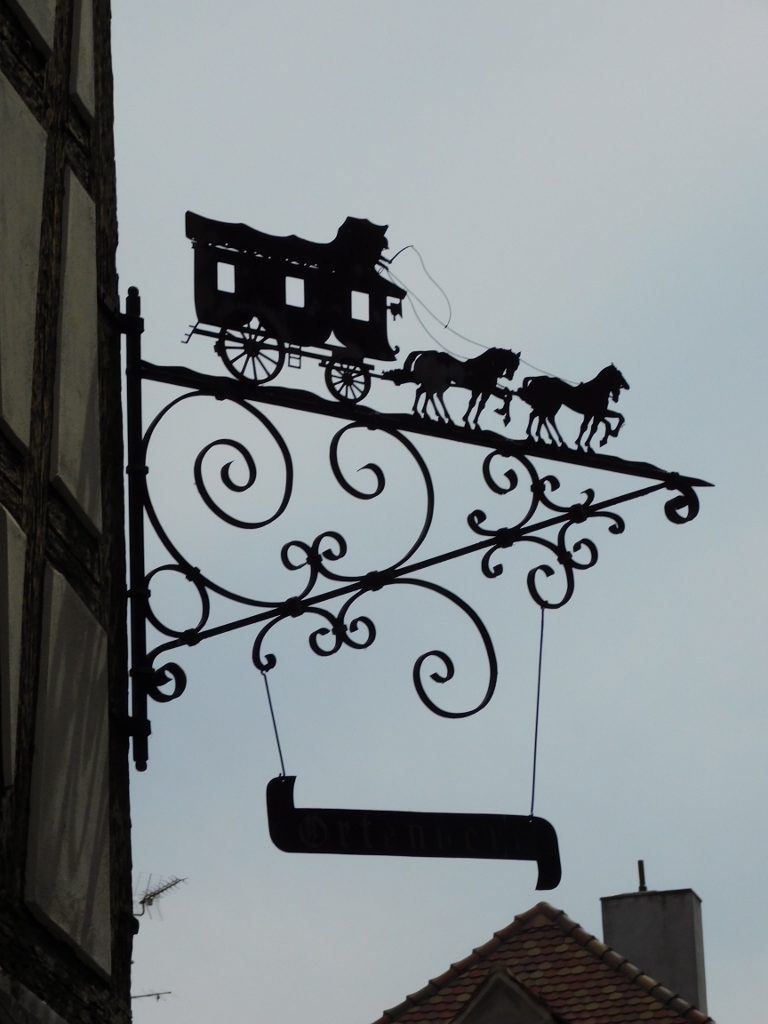 Strasbourg, a detail
Strasbourg, a detail
Now I walked to yet another medieval church and in this case it was St Thomas’ Church (Église Saint-Thomas).
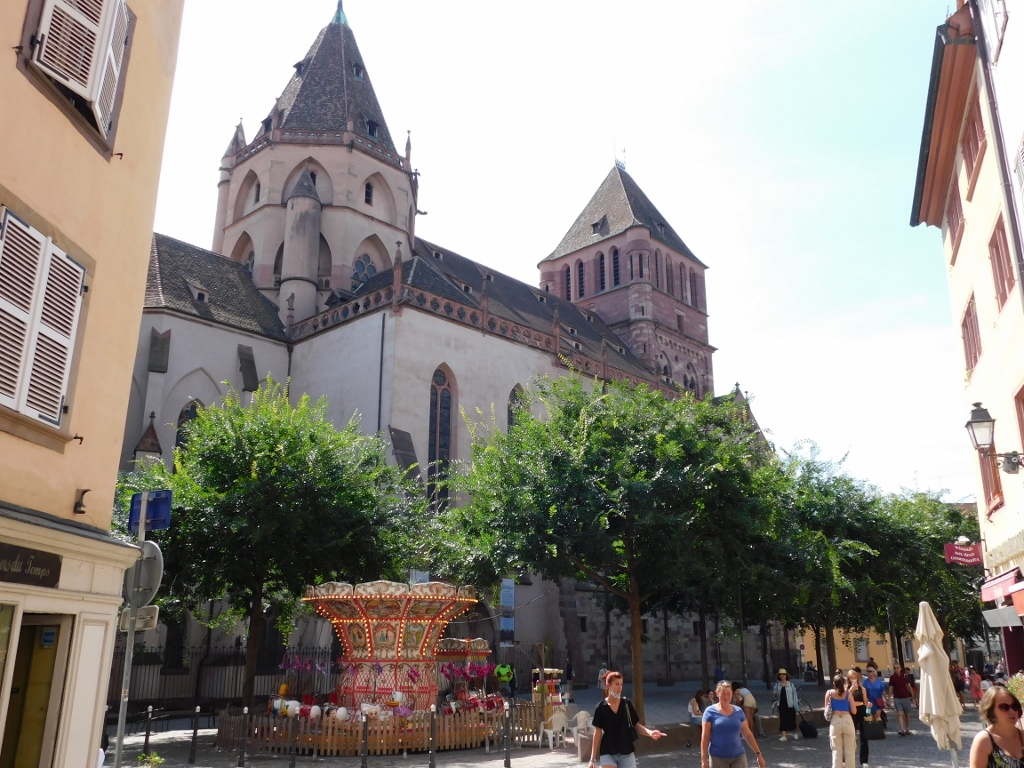 St Thomas’ Church
St Thomas’ Church
This is the main Protestant church in the city and the first shrine in this place was built already in the 6th century. The new one was then built in the 9th century, but it was damaged twice, both times by fire. Finally, the construction of a new church started in 1196 and it was finished in 1521. Because of the duration of the construction, the church also represents a mixture of different styles.
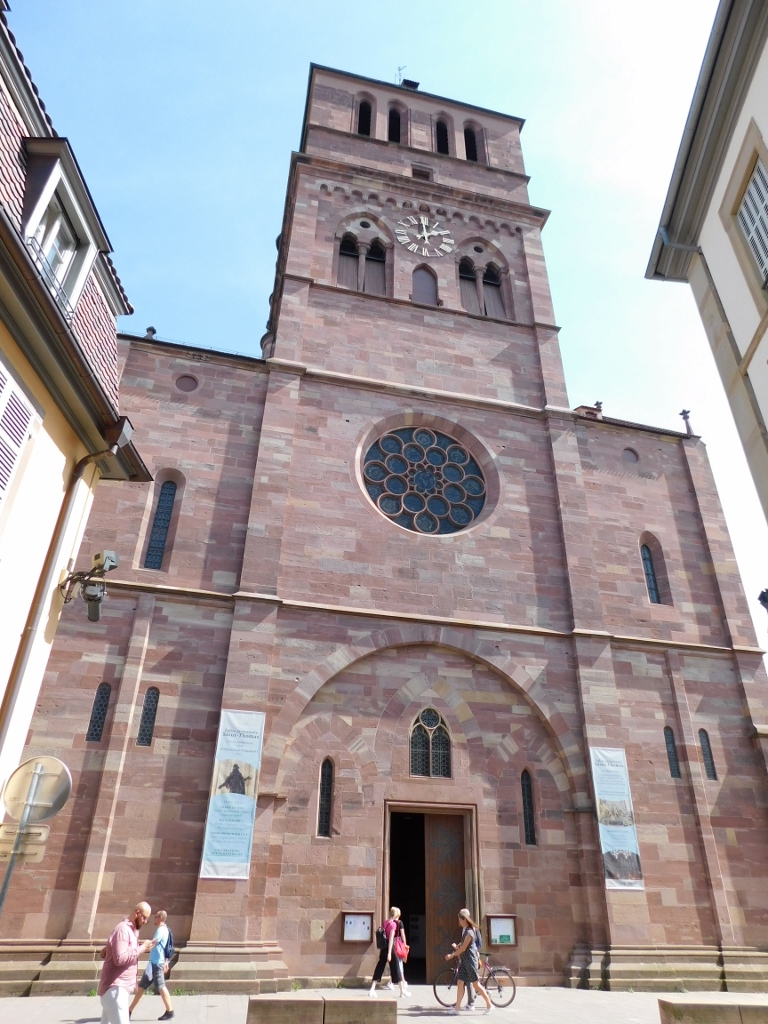 St Thomas’ Church
St Thomas’ Church
The church has five naves and it is the only hall church in the region of Alsace, which means that all the naves in it are of the same or approximately the same height.
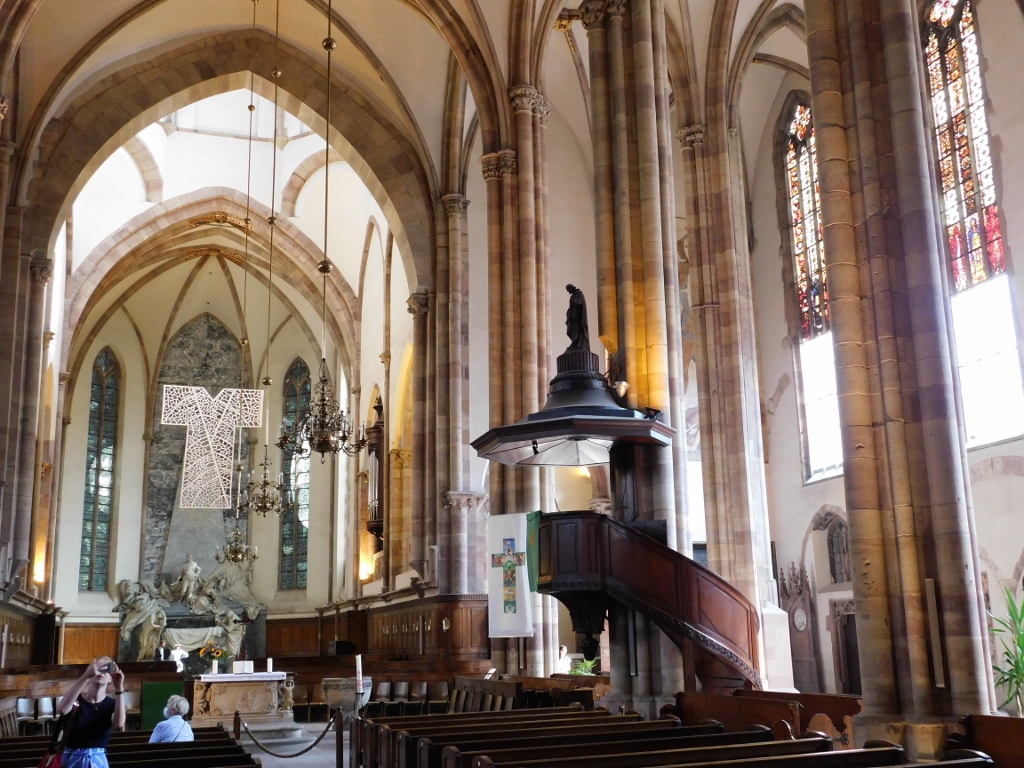 St Thomas’ Church, the interior
St Thomas’ Church, the interior
You can see numerous details here, but the one that seems to me to stand out in particular is that the church houses the mausoleum of Marshal Maurice, Count of Saxony (1696-1750), a famous military commander from the 18th century. In the photo above, this baroque mausoleum can be seen in the back of the altar space and here it is from up-close.
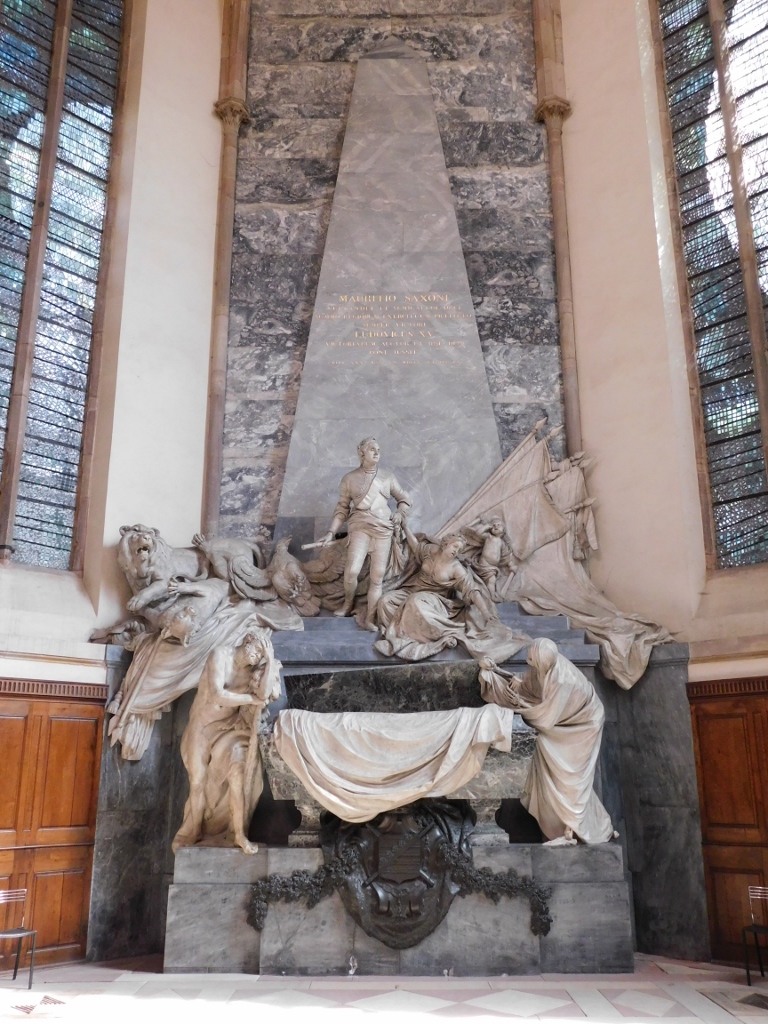 St Thomas’ Church, the mausoleum of Marshal Maurice, Count of Saxony
St Thomas’ Church, the mausoleum of Marshal Maurice, Count of Saxony
When I left the church I felt quite beat. Since it was very hot on this day, as a proven evening beer-drinker, I took a beer with my lunch with a hope it would refresh me. It did not. Quite the contrary, in the combination with the Alsatian pizza it only made me drowsy now and I was feeling heavy. That’s why I took a seat at the first café I came across and ordered a cold, non-alcoholic soda with some “uplifters” and it felt good, but it still took me a while to recover fully. The moral of the story: no more beers in the middle of a day! Especially when I don’t have a bed at hand.
After this short break, I headed for one of the most picturesque parts of the historical centre of Strasbourg and that is Little France or La Petite France.
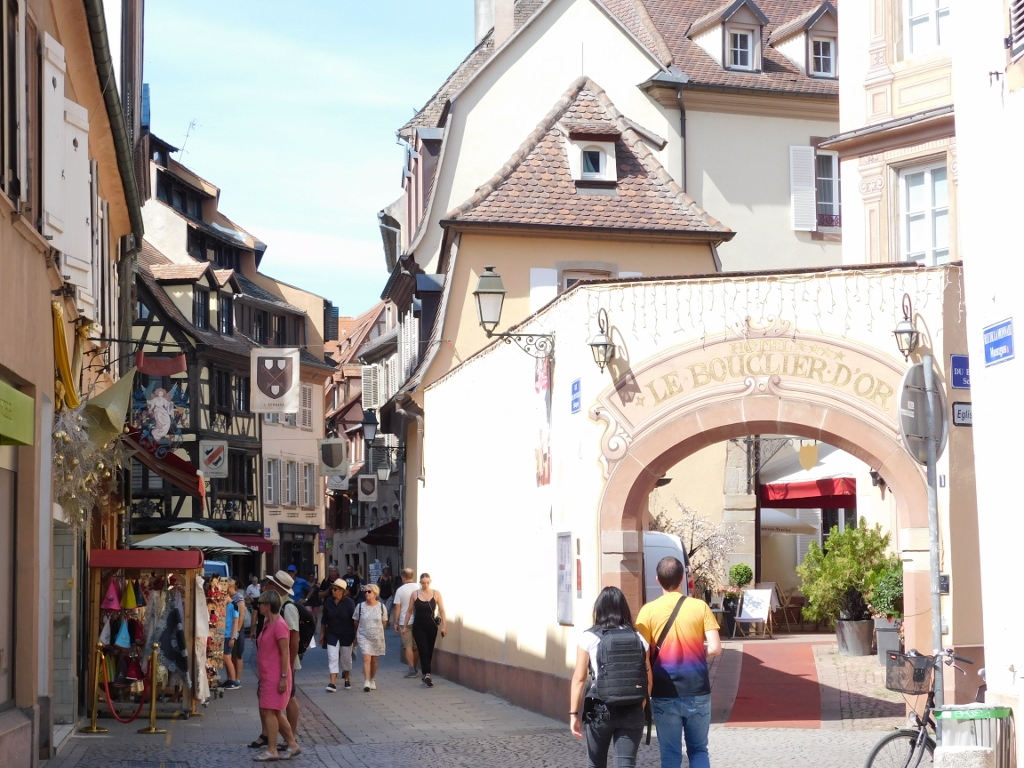 La Petite France, a detail
La Petite France, a detail
Just a couple of hundred metres from St Thomas’ Church you get to Saint-Martin Bridge (Pont Saint-Martin) from where there is an exceptionally fine view at a part of this quarter.
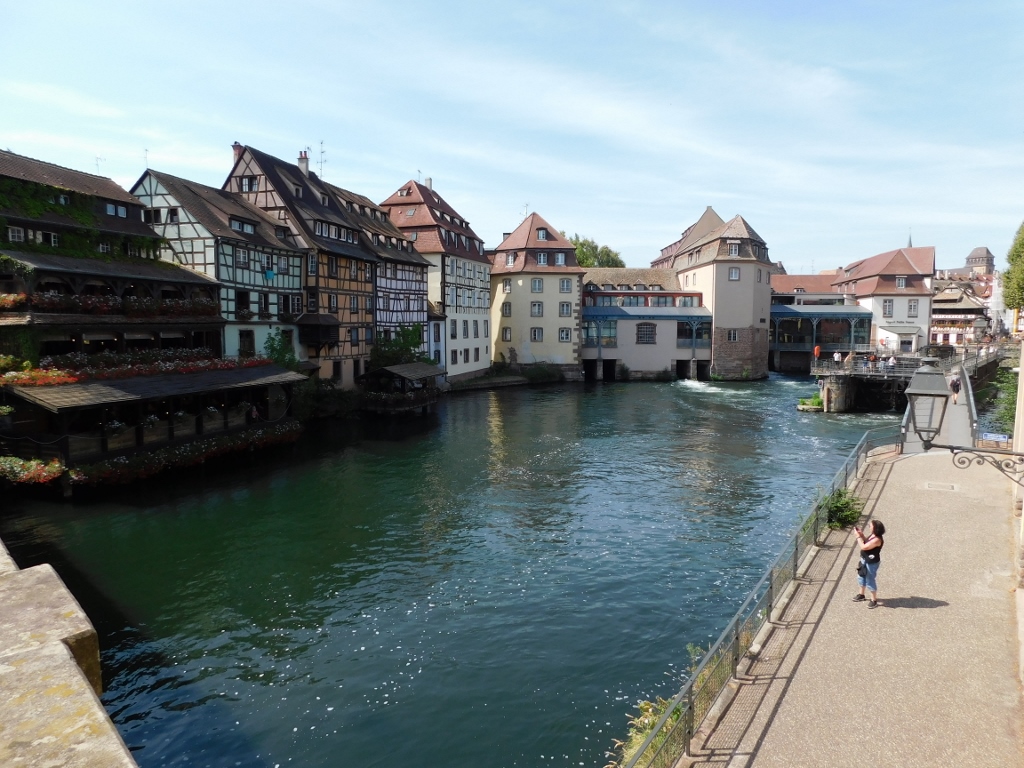 La Petite France, a detail
La Petite France, a detail
Concretely, one can see numerous half-timbered buildings here, as well as parts of a complex system of weirs, dams and locks which on the one hand provided access for the ships coming from the Rhine to almost every section of the city, while the waters of the river and the canal provided the drive for numerous mills and tanneries that used to exist here.
Nowadays, this is primarily a tourist part of the city, which is encouraged not only by the picturesque houses and streets, but also by the decoration in the shape of flowers.
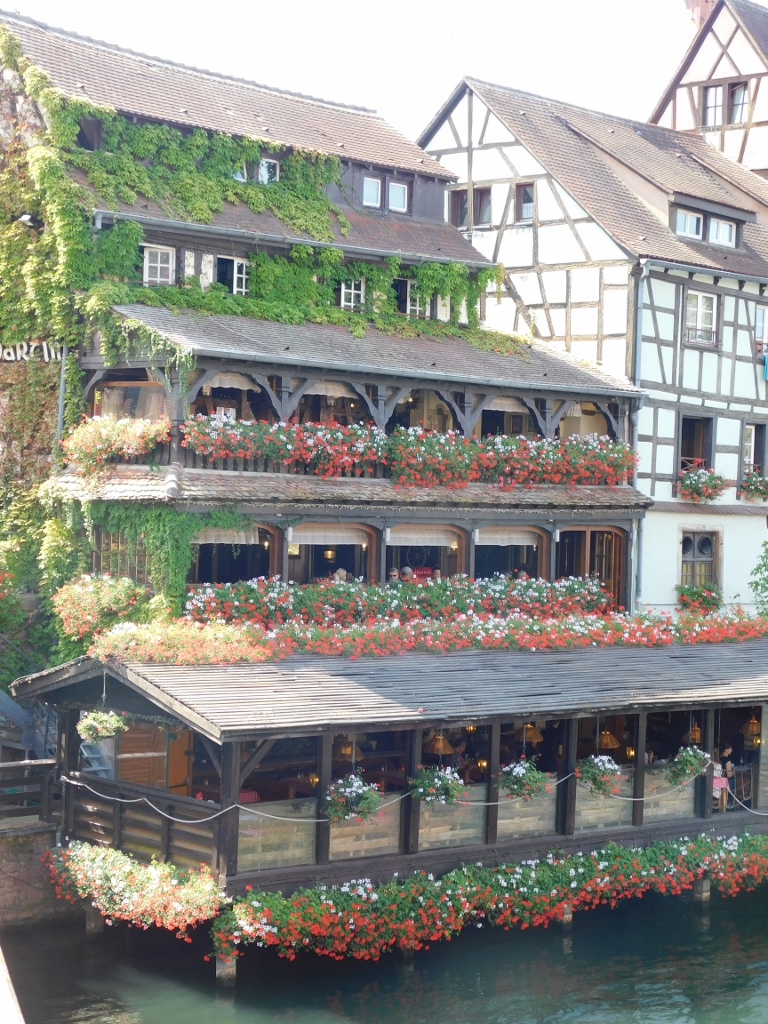 La Petite France, a detail
La Petite France, a detail
As I was crossing the bridge, I continued to admire this lovely part of the city.
 La Petite France, a detail
La Petite France, a detail
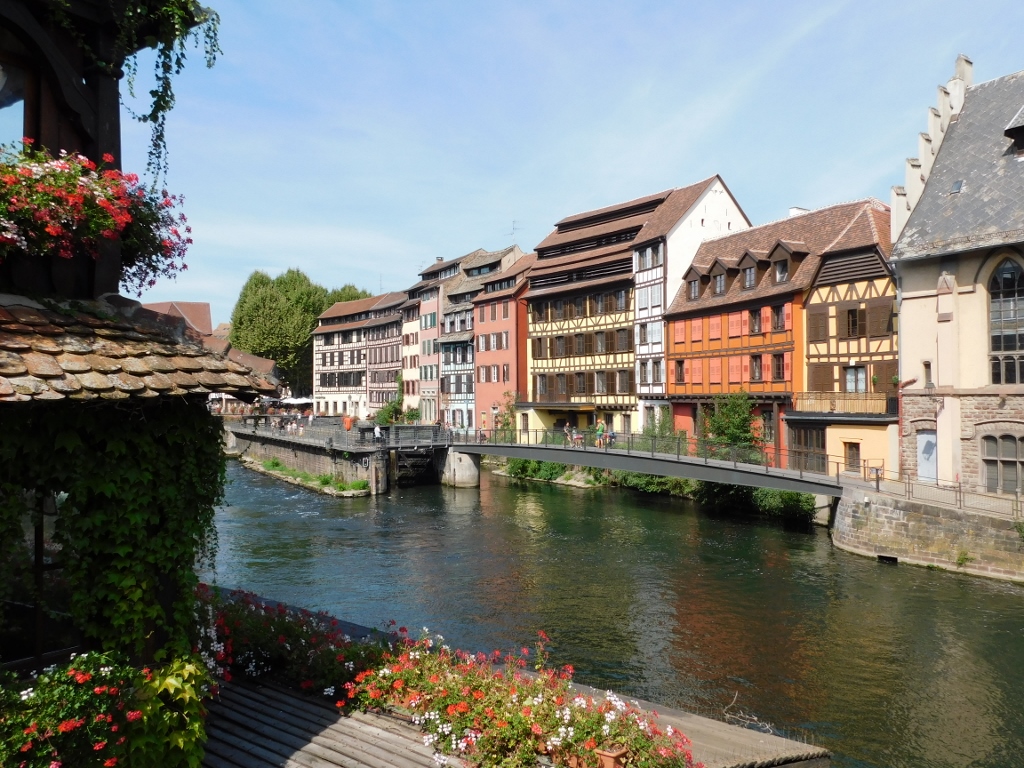 La Petite France, a detail
La Petite France, a detail
Following a narrow passage, now I headed for a larger street in order to get to yet another picturesque part of the city and this included a covered bridge called Le Barrage Vauban and the Covered Bridges of Strasbourg (Ponts Couverts de Strasbourg).
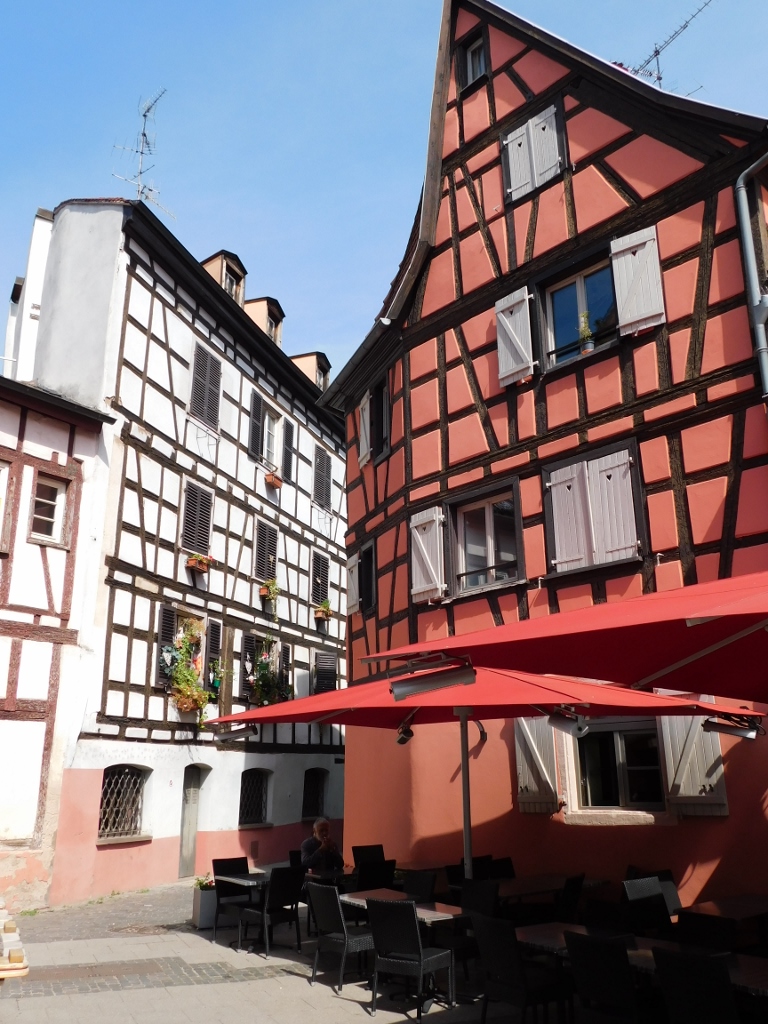 La Petite France, a detail
La Petite France, a detail
 Covered bridge Le Barrage Vauban (left) and the Covered Bridges of Strasbourg (right)
Covered bridge Le Barrage Vauban (left) and the Covered Bridges of Strasbourg (right)
The structure on the right-hand side of the photo is called the Covered Bridges of Strasbourg and this whole segment, the function of which was of a defence nature, was built in the first half of the 13th century. In the past, the bridges were indeed covered by a wooden structure in order for the defenders to be better protected, but these roofs were removed in 1784. The name, however, survived to the present days. Moreover, the bridges that can be seen here today were built in 1865 using sandstone. The bridges concretely span four canals made on the main course of the Ill river.
On the other hand, Le Barrage Vauban bridge is properly covered and it was built in the period 1685-1700 on the basis of a design made by famous Sébastien Le Prestre de Vauban (1633-1707), one of the greatest military engineers. The bridge also served as a dam that could additionally improve the defence of the city. Nowadays, it is used as a pedestrian bridge and it is also possible (and advisable) to go up to the top of the bridge, since there is a terrace that provides an excellent view at Little France or, as I’ve said, La Petite France.
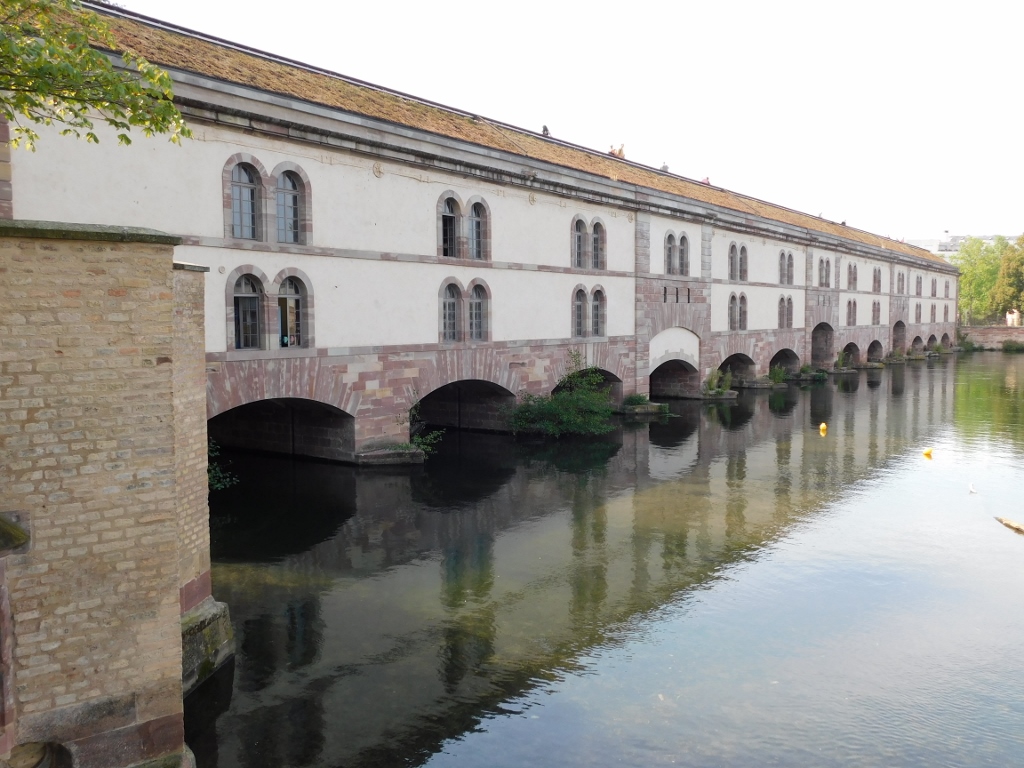 Covered bridge Le Barrage Vauban
Covered bridge Le Barrage Vauban
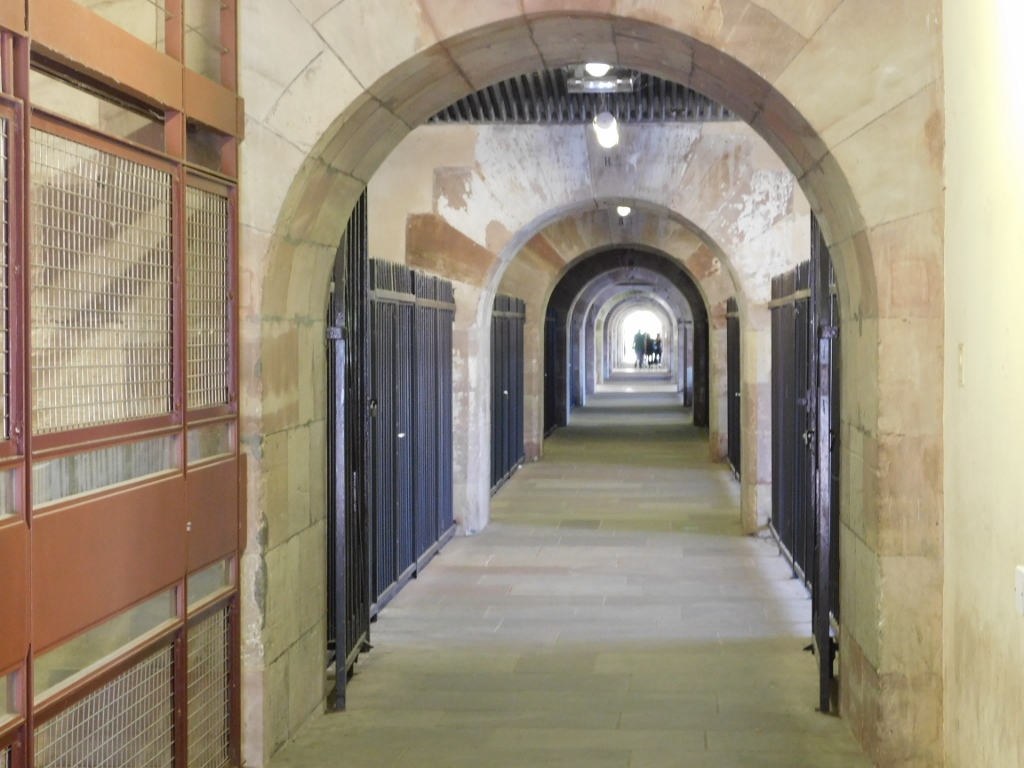 Covered bridge Le Barrage Vauban, passage over the bridge
Covered bridge Le Barrage Vauban, passage over the bridge
 View at Little France
View at Little France
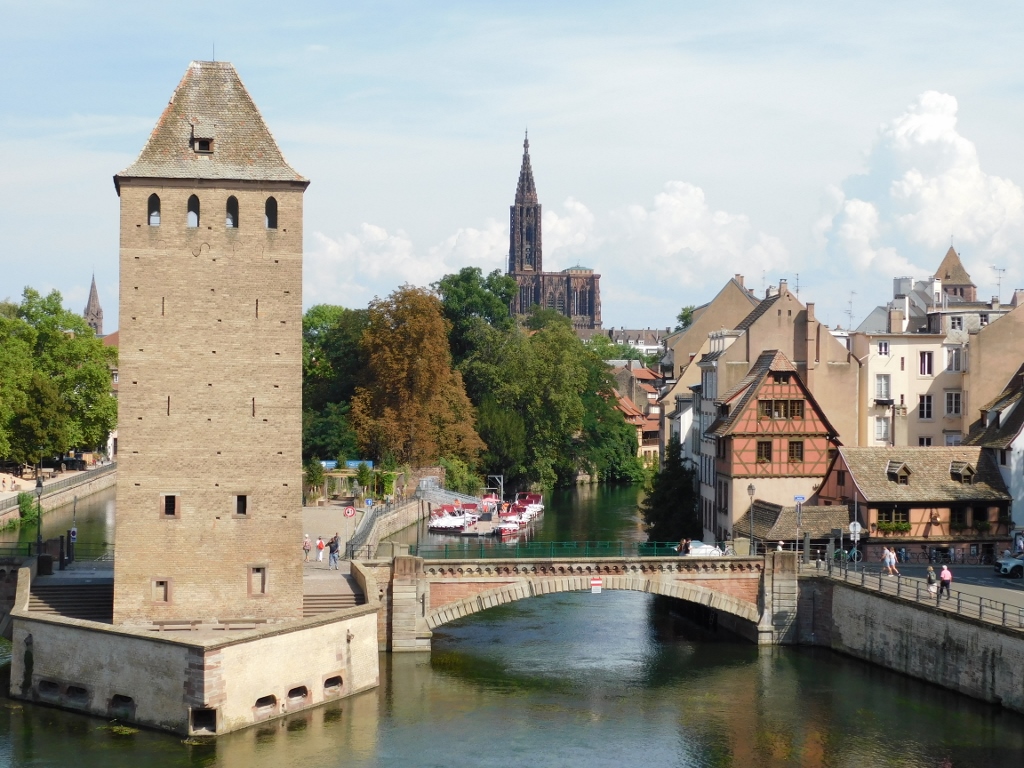 View at Little France, a detail
View at Little France, a detail
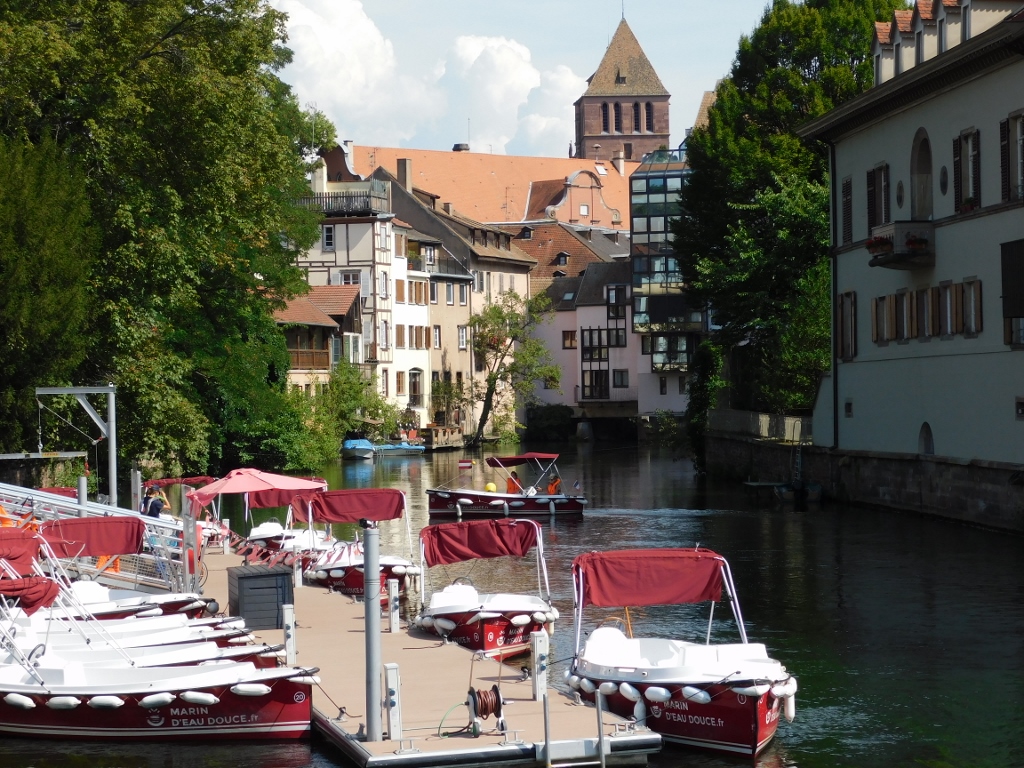 View at Little France, a detail
View at Little France, a detail
Now I returned to Saint-Martin Bridge following more or less the same route, since this suited me the most in terms of what I wanted to see, plus this was in the general direction of the train station since I was planning to leave Strasbourg soon.
Having crossed the bridge, first I went down to the promenade along the Ill and then using a walkway I headed for some other parts of Little France. As it turned out, I got here at the right moment, since there was a tourist boat passing by.
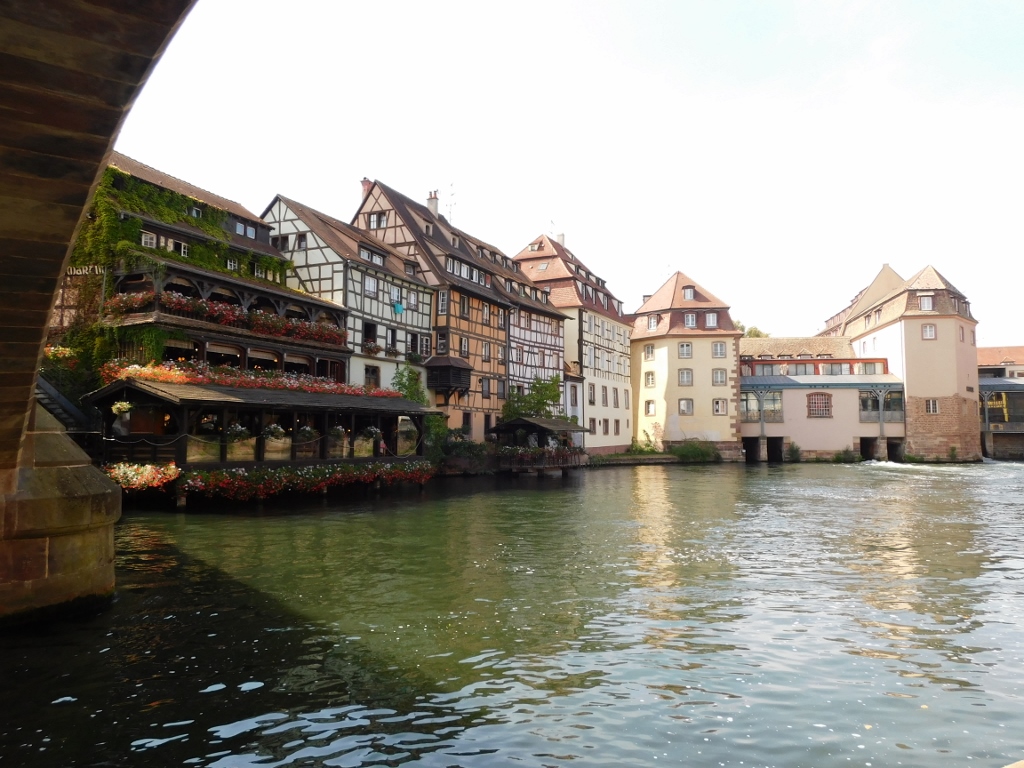 La Petite France, a detail
La Petite France, a detail
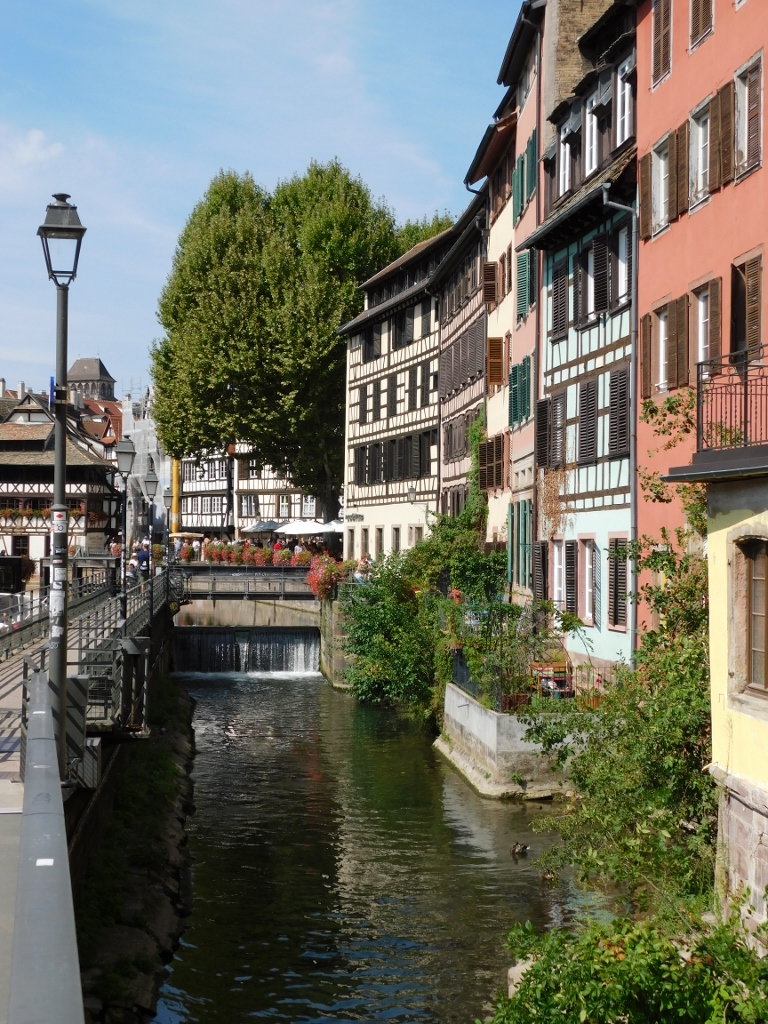 La Petite France, a detail
La Petite France, a detail
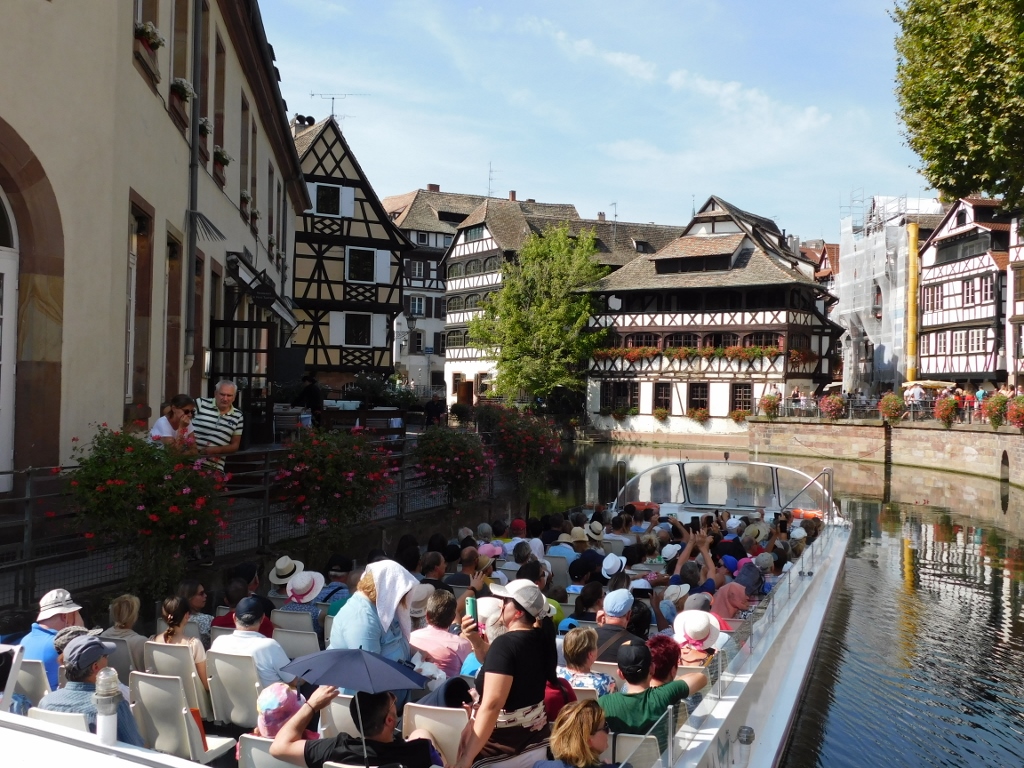 La Petite France, a detail
La Petite France, a detail
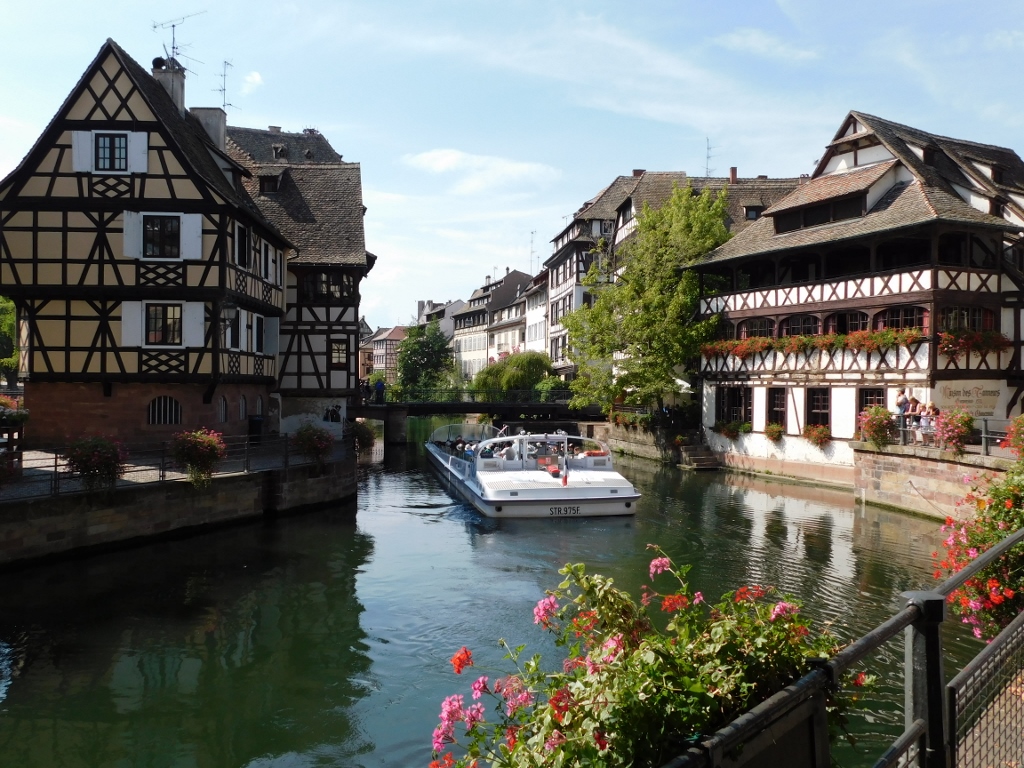 La Petite France, a detail
La Petite France, a detail
Since the boat moved slowly, for the clear reasons, I had the time both to take photos and shoot with my video camera. Here is a short video clip:
And then I got to Rue du Bain-aux-Plantes which is particularly renowned for being exceptionally beautiful and picturesque. Here are a few photos:
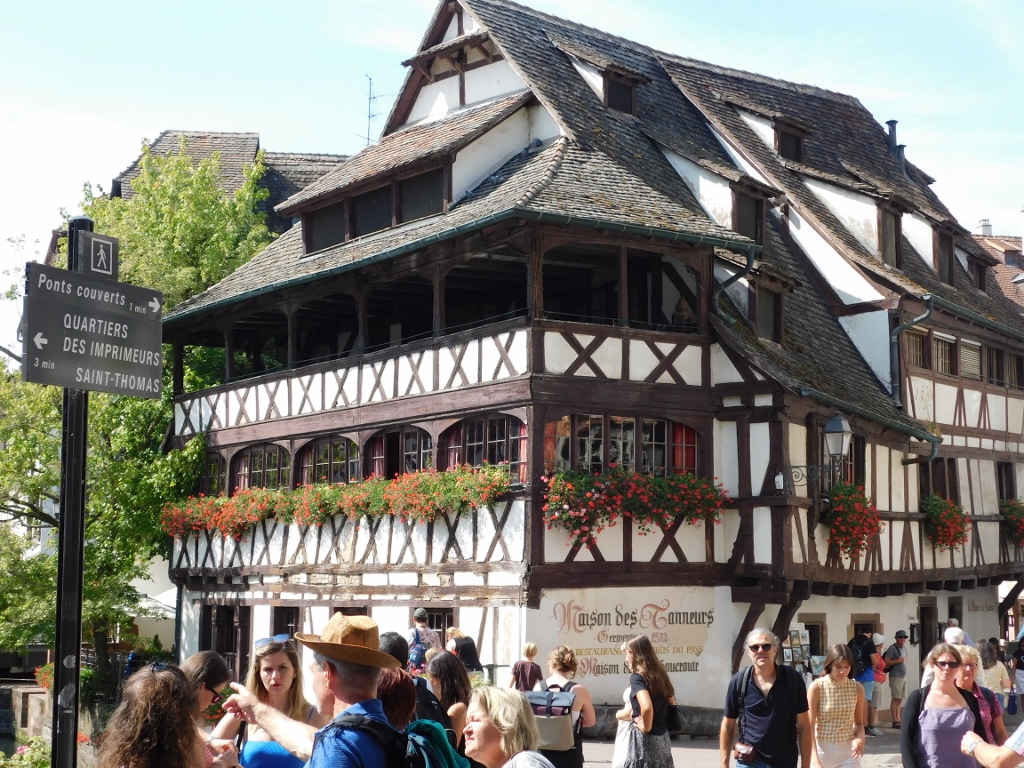 La Petite France, a detail
La Petite France, a detail
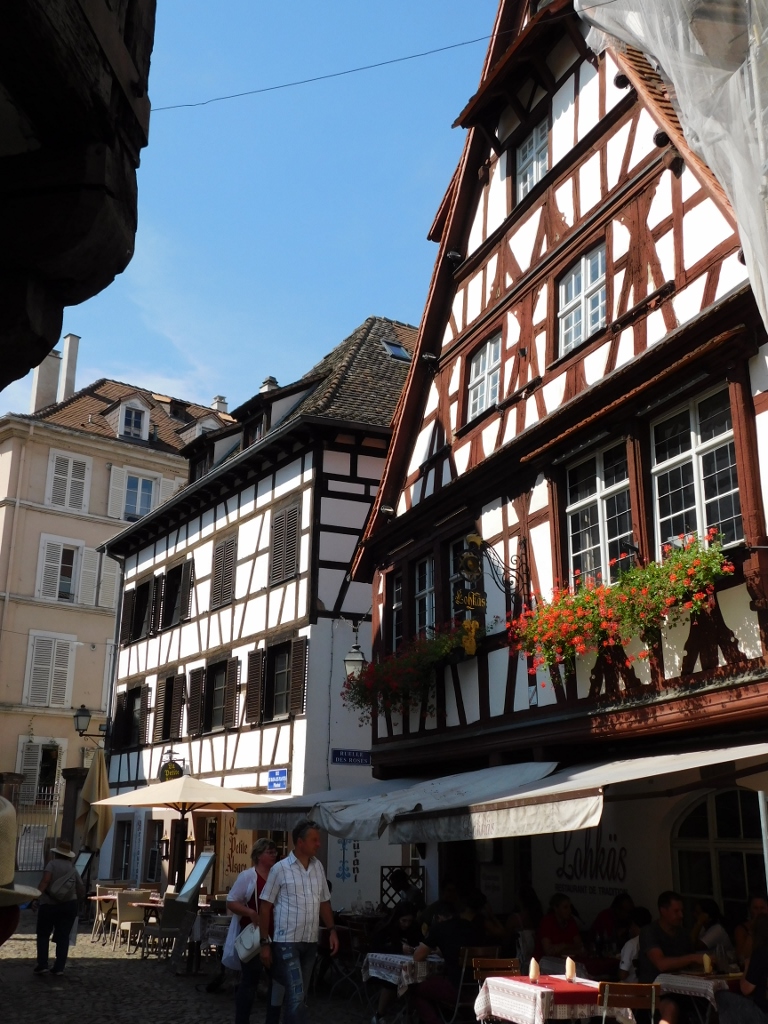 La Petite France, a detail
La Petite France, a detail
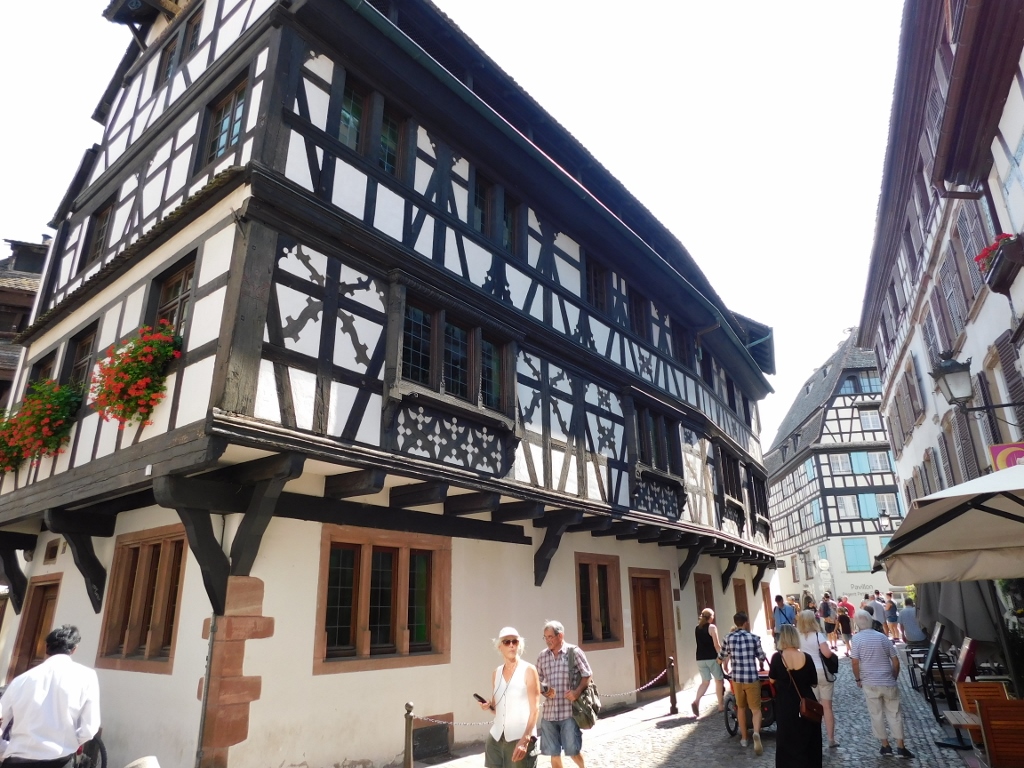 La Petite France, a detail
La Petite France, a detail
All I had to do now was to walk back to the train station in Strasbourg. I have already said before that one can easily spend a few days visiting the city and judging by the photos I have seen on the internet, it would be certainly interesting to come here during other annual seasons as well and not only in the summer. Still, I did not have that much time, so I decided to spend the afternoon of this day in Colmar, yet another exceptionally lovely place.
Colmar was first mentioned in history in the 8th century. Ever since the 13th century, the city represented an important wine trade centre and nowadays it is a part of the Alsatian Wine Route. In terms of geography, it is roughly speaking mid-way between Strasbourg and Mulhouse, with both of which it is connected by regular railway lines.
Having arrived here by a train from Strasbourg, I headed for my first destination within the city following a straight and, I would say, initially a little boring street. Still, I also walked past a nice park and a plateau where I saw the name of the city, a fountain and a monument to a general, as well as the tower of St. Martin’s Church which I planned to go to later on.
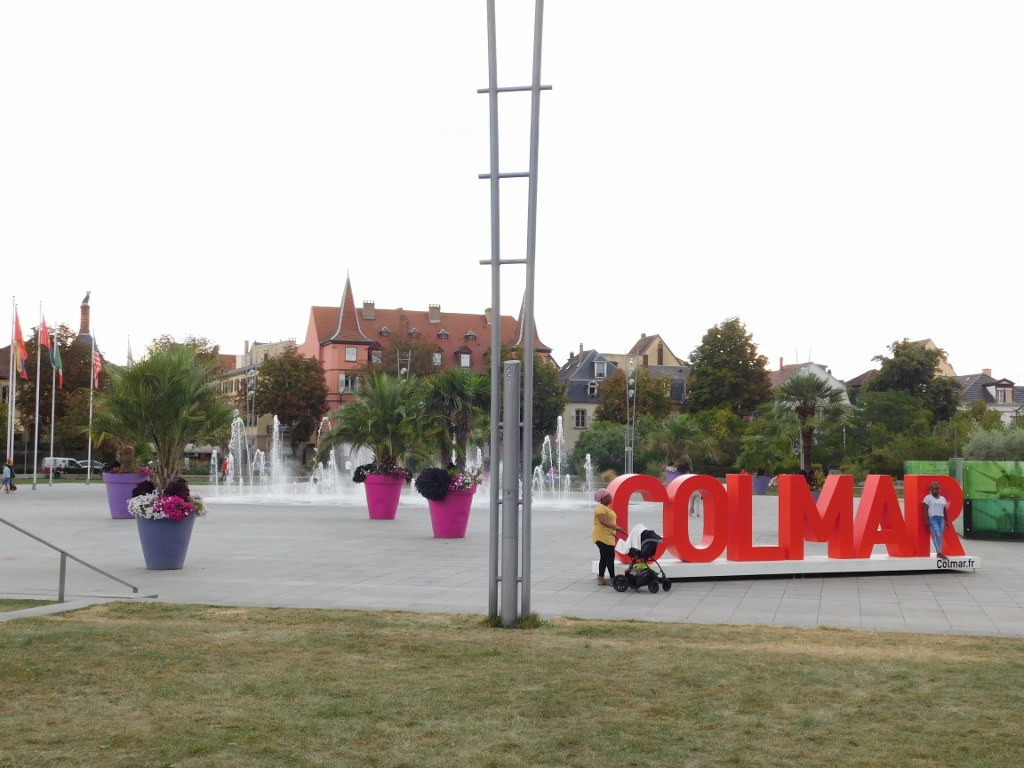 Colmar, a detail
Colmar, a detail
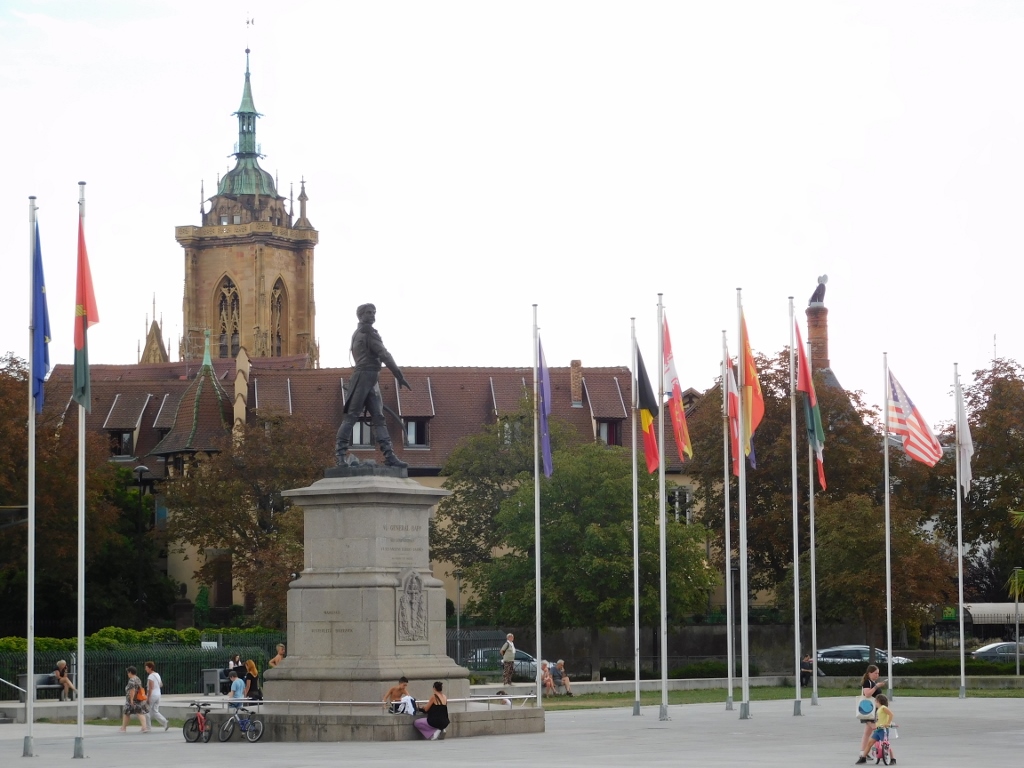 Colmar, a detail
Colmar, a detail
A couple of hundred metres farther, I also walked beside the former St. Catherine Church (Église Sainte-Catherine) from 1371 that used to be a part of an abbey, but is nowadays used as a concert hall.
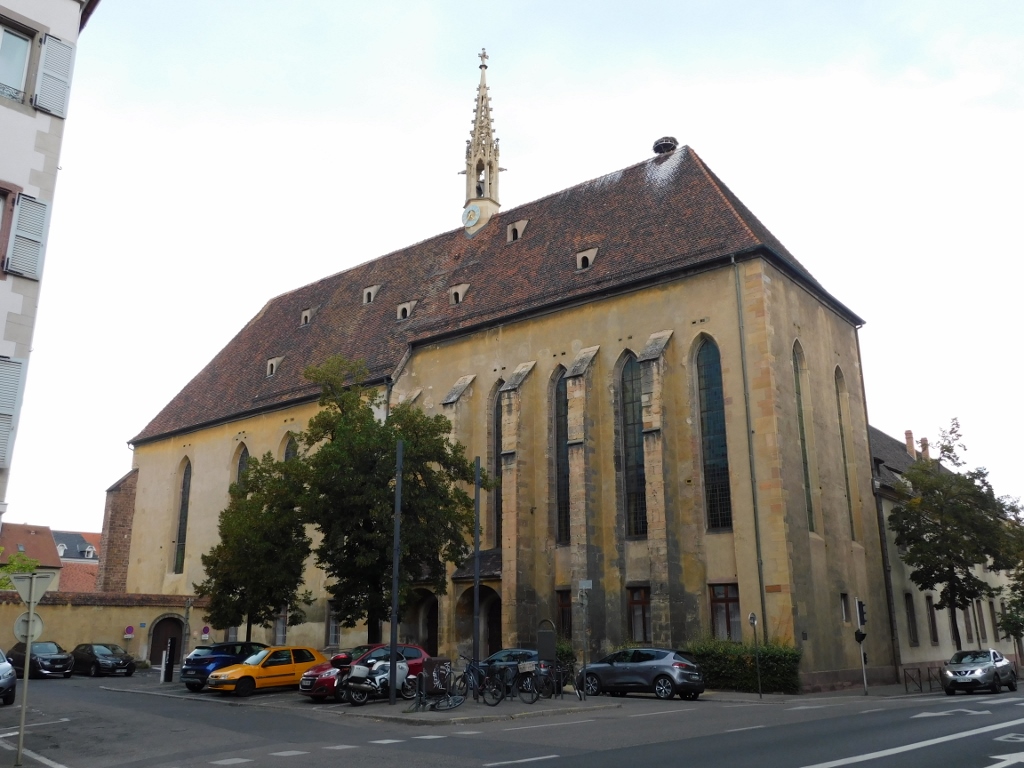 Former St. Catherine Church
Former St. Catherine Church
So, my first destination here was a museum which was, unfortunately, as I had realised in the meantime, closed, but I still wanted to see it at least from the outside. It is interesting because it is also situated in a former monastery from the 13th century. This is the Unterlinden Museum and it is the most visited museum in all of Alsace. The backbone of its collection constitute the exhibits linked to the religious art, including also a masterpiece in the shape of the Isenheim Altarpiece polyptych.
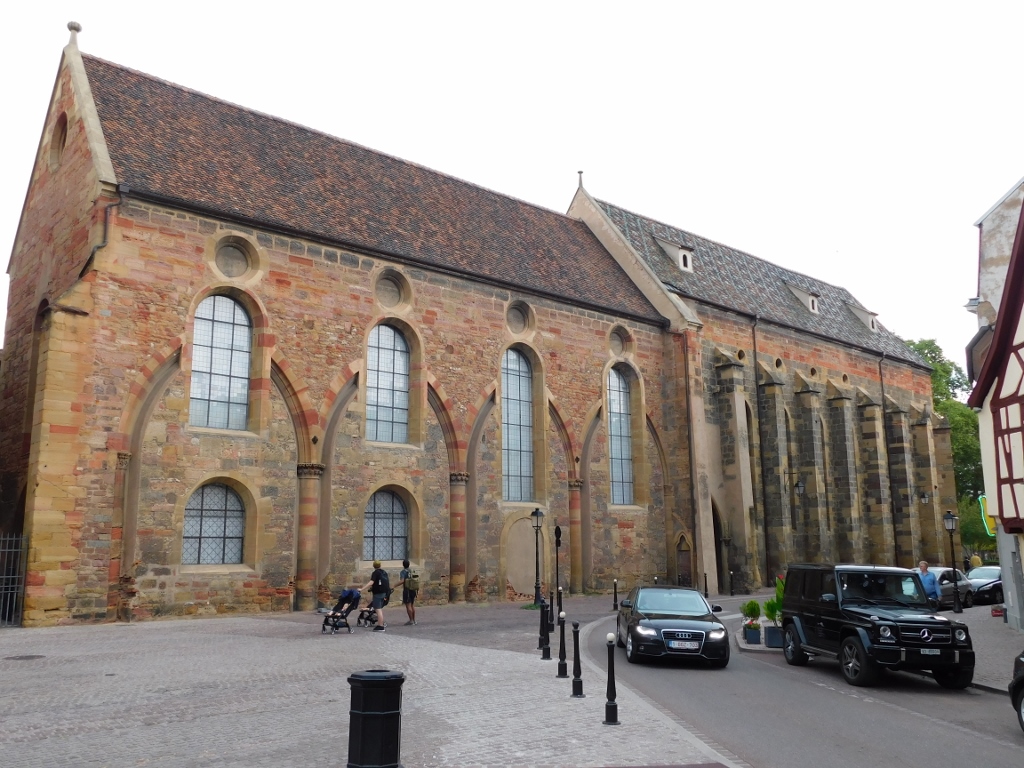 The Unterlinden Museum
The Unterlinden Museum
The museum was founded in 1849, but because of the growth of its collection, there was a need for additional space. This was solved at the beginning of the 21st century by connecting the museum with a neighbouring building that was used in the past as the public bath, but was certainly significantly reconstructed before being united with the original museum.
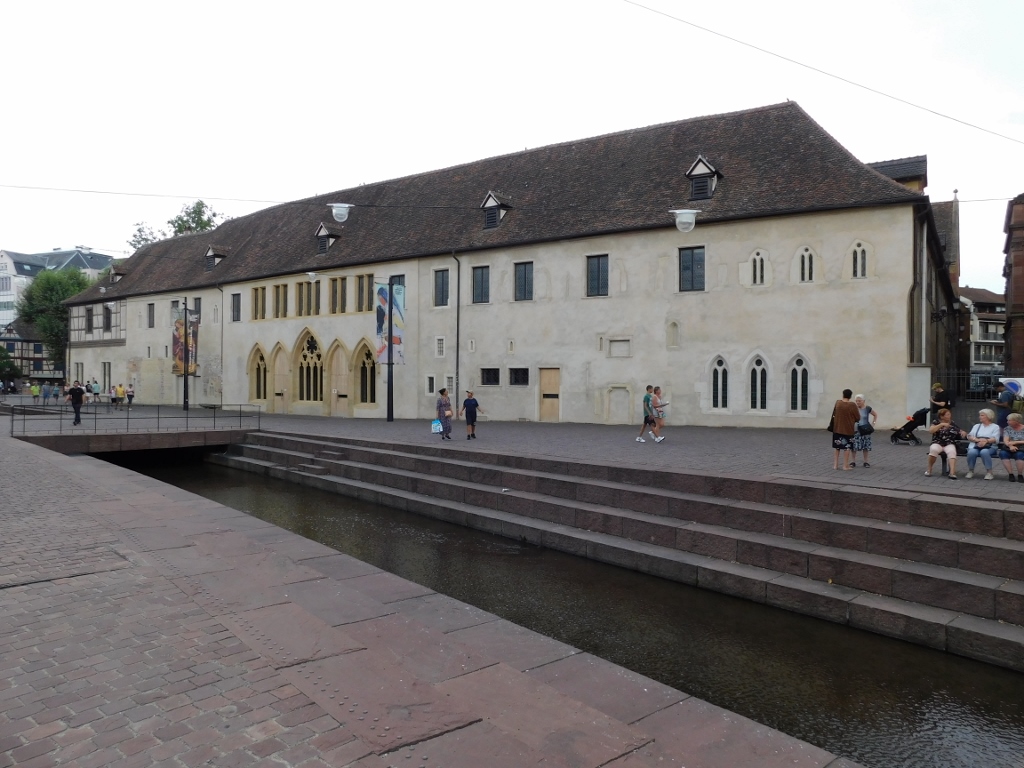 Unterlinden Museum, the wing that used to be public baths
Unterlinden Museum, the wing that used to be public baths
In Colmar as well, although much less than in Strasbourg, there are canals of the river Lauch, so I presume that this also includes a well built canal that can be seen in the square in front of the Unterlinden Museum. On the other side is the tourist office building. Tourism is the main industry in Colmar and therefore it is no wonder that such an impressive building is used for the needs of tourists.
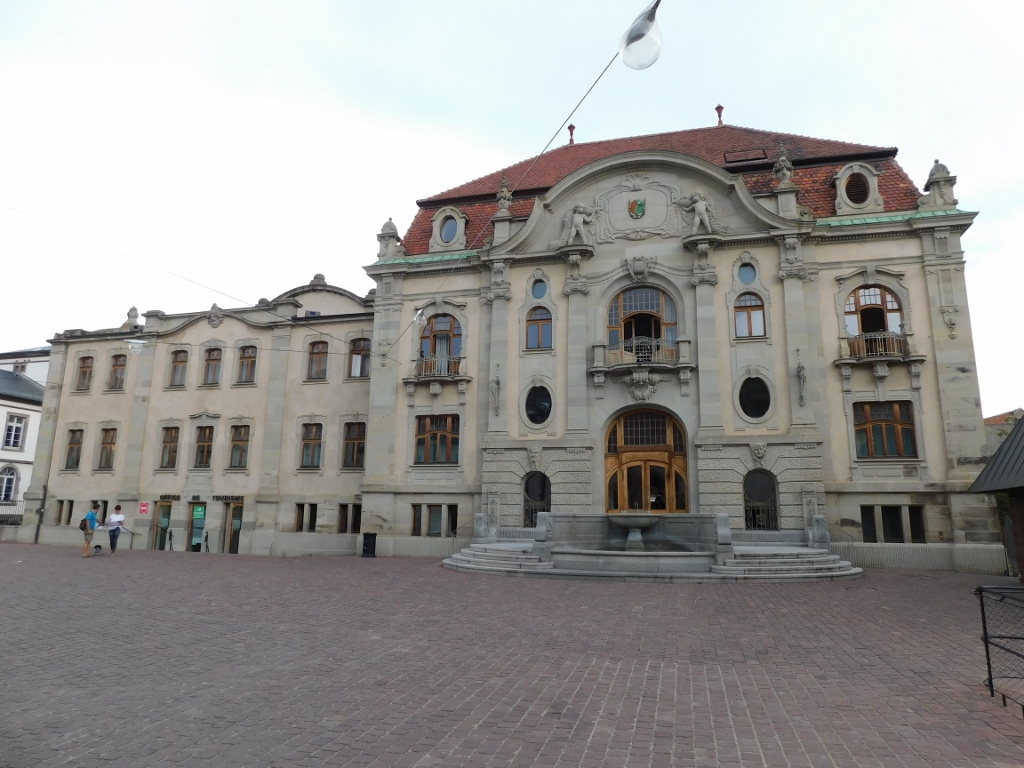 Tourist Office in Colmar
Tourist Office in Colmar
Flanking the museum is a smallish park and this is the place from which a small tourist train leaves for those who are interested. I was more in the walking mood.
 Colmar, a detail
Colmar, a detail
What I could see in front of me was exceptionally inspiring and I wanted to visit parts of Colmar following my plan, desires and rhythm.
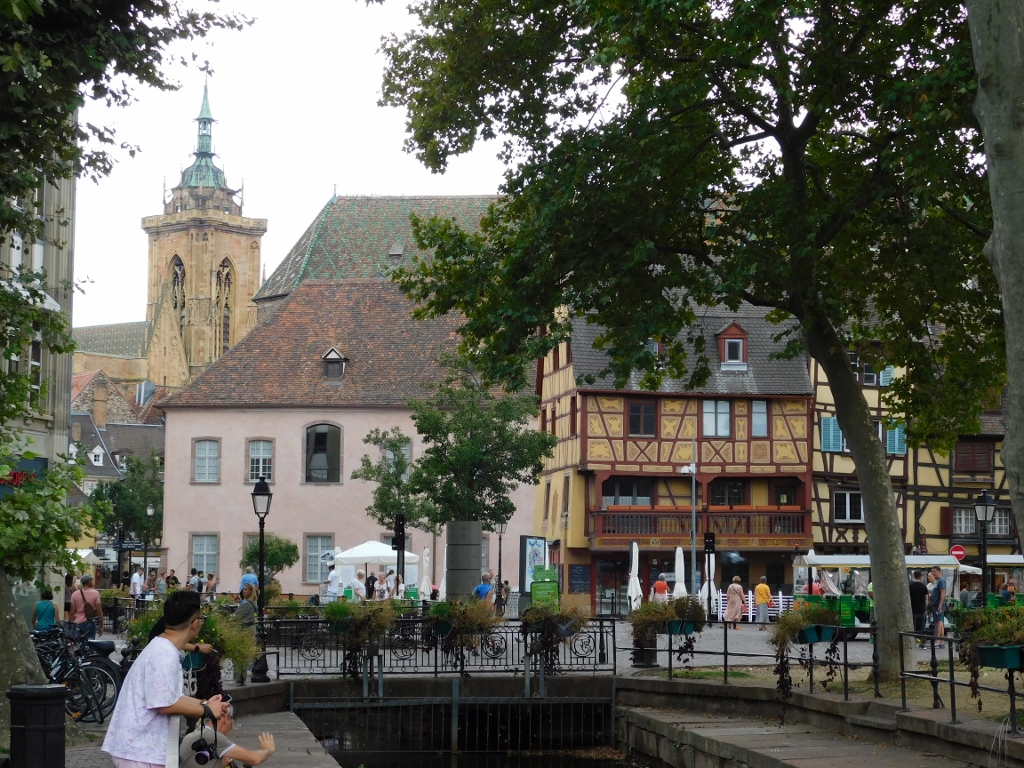 Colmar, a detail
Colmar, a detail